Forums
- Forums
- Duggy's Reference Hangar
- RAF Library
- Fairey Battle
Fairey Battle
Post a reply
- Go to Previous topic
- Go to Next topic
- Go to Welcome
- Go to Introduce Yourself
- Go to General Discussion
- Go to Screenshots, Images and Videos
- Go to Off topic
- Go to Works in Progress
- Go to Skinning Tips / Tutorials
- Go to Skin Requests
- Go to IJAAF Library
- Go to Luftwaffe Library
- Go to RAF Library
- Go to USAAF / USN Library
- Go to Misc Library
- Go to The Ops Room
- Go to Made in Germany
- Go to Campaigns and Missions
- Go to Works in Progress
- Go to Juri's Air-Raid Shelter
- Go to Campaigns and Missions
- Go to Works in Progress
- Go to Skinpacks
- Go to External Projects Discussion
- Go to Books & Resources
-
6 years agoSat May 25 2024, 10:39amDuggy
 Main AdminOrigins
Main AdminOrigins
In April 1933, the British Air Ministry issued Specification P.27/32 which sought a two-seat single-engine monoplane day bomber to replace the Hawker Hart and Hind biplane bombers then in service with the Royal Air Force (RAF). A requirement of the prospective aircraft was to be capable of carrying 1,000 lb bombs over a distance of 1,000 miles while flying at a speed of 200 MPH. According to aviation author Tony Buttler, during the early 1930s, Britain had principally envisioned that any future war would see France as its enemy and thus the distance to enable the bomber to reach Paris was a factor in determining the necessary range that was sought. According to aerospace publication Air International, a key motivational factor in the Air Ministry's development of Specification P.27/32 had been for the corresponding aircraft to act as an insurance policy in the event that heavier bombers were banned by the 1932 Geneva Disarmament Conference.
The Fairey Aviation Company were keen to produce a design to meet the demands of Specification P.27/32 and commenced work upon such a design. The Belgian aeronautical engineer Marcel Lobelle served as the aircraft's principal designer. One of the early decisions made by Lobelle on the project was the use of the newly developed Rolls-Royce Merlin I engine, which had been selected due to its favourable power and compact frontal area. The Merlin engine was quickly paired to a de Havilland Propellers-built three-bladed variable-pitch propeller unit. The choice of engine enabled the designing of the aircraft to possess exceptionally clean lines and a subsequently generous speed performance. The resulting design was an all-metal single-engine aircraft, which adopted a low-mounted cantilever monoplane wing and was equipped with a retractable tail wheel undercarriage.
A total of four companies decided to formally respond to Specification P.27/32, these being the Fairey, Hawker Aircraft, Armstrong Whitworth Aircraft, and Bristol Aeroplane Company. Of the submissions made, the Air Ministry selected Armstrong Whitworth and Fairey to produce prototypes to demonstrate their designs. On 10 March 1936, the first Fairey prototype, K4303, equipped with a Merlin I engine capable of generating 1,030 hp (770 kW), performed its maiden flight at Hayes, Middlesex. The prototype was promptly transferred to RAF Martlesham Heath, Woodbridge, Suffolk for service trials, during which it attained a maximum speed of 257 MPH and reportedly achieved a performance in advance of any contemporary day bomber.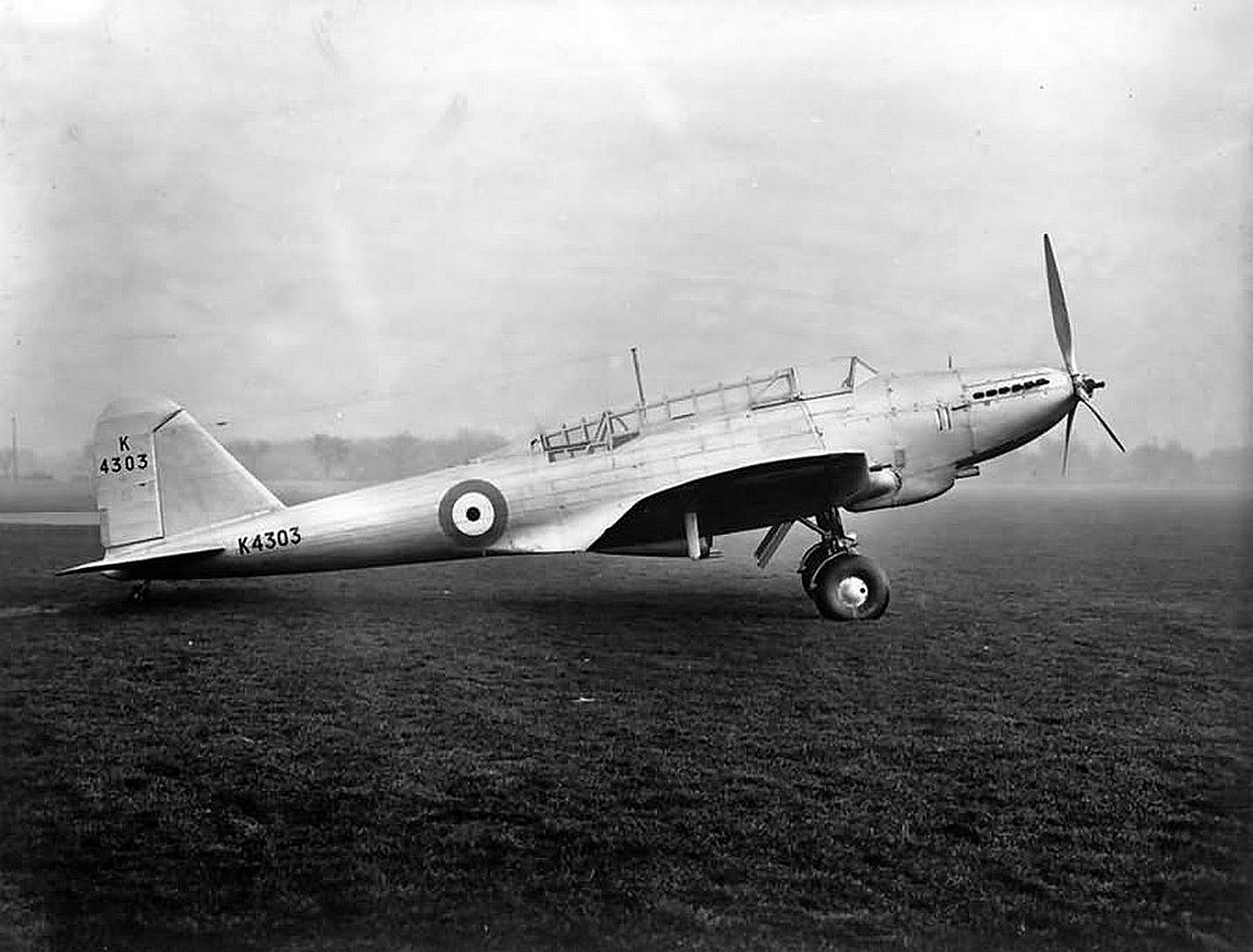
Even prior to the first flight of the prototype, some members of the Air Staff had concluded that both the specified range and bomb load, to which the aircraft had been designed to, were insufficient to enable its viable use in a prospective conflict with a re-emergent Germany. Despite these performance concerns, there was also considerable pressure for the Battle to be rapidly placed into mass production in order that it could contribute to a wider increase of the RAF's frontline combat aircraft strength in line with similar strides being made during the 1930s by the German Luftwaffe. As such, the initial production order placed for the type, for the manufacture of 155 aircraft built as per the requirements of Specification P.23/35, which had received the name Battle, had been issued in advance of the first flight of the prototype.
Production
In 1936, further orders were placed for Fairey to build additional Battles to Specification P.14/36. In June 1937, the first production Battle, K7558, conducted its maiden flight. K7558 was later used to perform a series of official handling and performance trials in advance to the wider introduction of the type to operational service. During these trials, it demonstrated the Battle's ability to conduct missions of a 1,000 mile range while under a full bomb load. The first 136 Fairey-built Battles were the first to be powered by the Merlin I engine. By the end of 1937, 85 Battles had been completed and a number of RAF squadrons had been re-equipped with the type, or were otherwise in the process of re-equipping.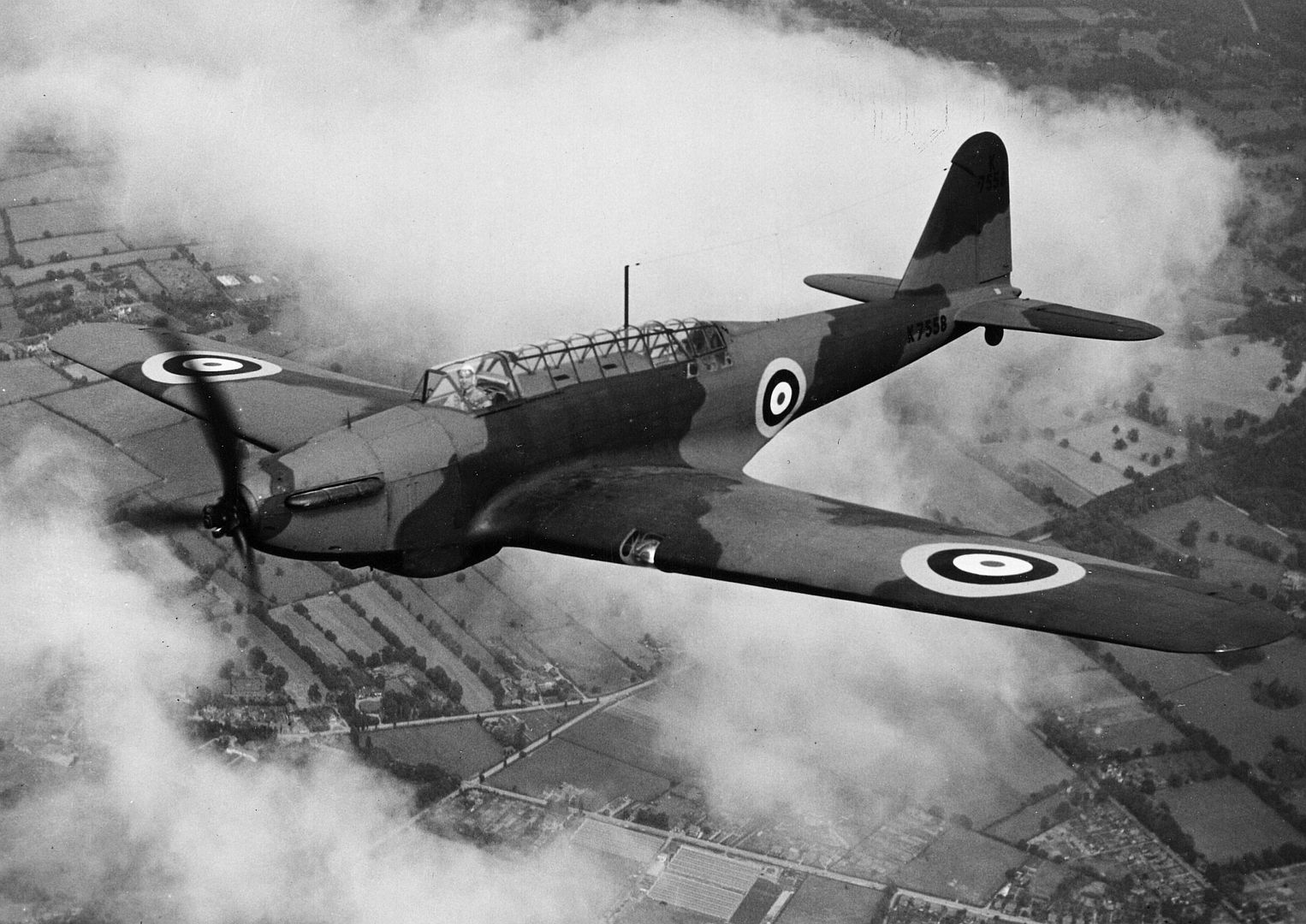
As the RAF embarked on what became a substantial pre-war expansion programme, the Battle was promptly recognised as being a priority production target. At one point a total of 2,419 aircraft were on order for the service. In June 1937, the first aircraft was completed at Hayes, but all subsequent aircraft were manufactured at Fairey's newly completed factory at Heaton Chapel, Stockport. Completed aircraft were promptly dispatched for testing at the company's facility adjacent to RAF Ringway, Manchester. A total of 1,156 aircraft were produced by Fairey.
Subsequently, as part of government-led wartime production planning, a shadow factory operated by the Austin Motor Company at Cofton Hackett, Longbridge, also produced the type, manufacturing a total of 1,029 aircraft to Specification P.32/36. On 22 July 1938, the first Austin-built Battle, L4935, conducted its maiden flight. At that point, concerns that the aircraft was obsolete had become widespread, but due to the difficulties associated with getting other aircraft types into production, and the labour force having already been established, stop-gap orders were maintained, and production continued at a steady rate through to late 1940.
A further 16 were built by Fairey for service with the Belgian Air Force (contrary to popular belief, they were not built in Belgium). The Belgian Battles were delivered in early 1938, and were differentiated from British-built examples by having a longer radiator cowling and a smoother camouflage finish. In September 1940, all production activity came to a close and the final assembly lines were shuttered. Overall production of the Battle during its entire manufacturing life was 2,201 machines, including 16 for Belgium.
A number of Battles which had been originally completed as bombers were later converted to serve in different roles, such as target tugs and trainer aircraft.
Design
The Fairey Battle was a single-engine monoplane light bomber, powered by a Rolls-Royce Merlin engine. Production aircraft were progressively powered by various models of the Merlin engine, such as the Merlin I, II, III (most numerous) and V, however all bombers were designated officially as the Battle Mk I. The Battle had a relatively clean design, having adopted a slim oval-shaped fuselage which was manufactured in two separate sections. The forward section, in front of the cockpit, relied mainly upon a steel tubular structure to support the weight of the nose-mounted engine; the rear section was of a metal monocoque structure comprised hoop frames and Z-section stringers which was built on jigs. The structure of the aircraft involved several innovations and firsts for Fairey, it had the distinction of being the company's first low-wing monoplane; it also was the first implementation of a light-alloy stressed-skin construction to be produced by the firm.
The wing of the Battle used a two-part construction, the centre section being integral with the fuselage. The internal structure of the wings relied upon steel spars which varied in dimension towards the wing tips; the ailerons, elevators, and rudder all were metal-framed with fabric coverings, while the split trailing edge flaps were entirely composed of metal.
The Battle was furnished with a single cockpit to accommodate a crew of three, these typically being a pilot, observer/navigator and radio operator/air gunner. The pilot and gunner were seated in a tandem arrangement in the cockpit, the pilot being located in the forwards position controlling the fixed .303 Browning machine gun mounted in the starboard wing, while the gunner was in the rear position where he could use the manually aimed .303 Vickers K machine gun. The observers position, who served as the bomb aimer, was situated directly beneath the pilot's seat; sighting was performed in the prone position through a sliding panel in the floor of the fuselage using the Mk. VII Course Setting Bomb Sight. Complete with a continuous glazed canopy, the cockpit of the Battle had several similarities to that of a large fighter rather than a bomber.
The armament and crew of the aircraft were similar to the Bristol Blenheim bomber: three crew, 1,000 lbs standard bombload and two machine guns, although the Battle was a single-engine bomber with less horsepower available. The Battle had a standard payload of four 250 lb (113 kg) bombs which was carried in cells contained within the internal space of the wings. Maximum bomb load was 1,500 lb (680 kg), with two additional 250 lb (113 kg) bombs on underwing racks, or with two 500 lb (227 kg) bombs carried externally under bomb bays and two 250 lb (113 kg) bombs on underwing racks. The bombs were mounted on hydraulic jacks and were normally released via purpose-built trap doors; during a dive bombing attack profile, they were instead lowered below the surface of the wing.
The Battle was a robust aircraft which was frequently described as being easy to fly, even for relatively inexperienced pilots. The pilot was provided with overall good external visibility and the cockpit was considered to be roomy and comfortable for the era; however, the task of simultaneously deploying the flaps and the retractable undercarriage, which included a safety catch, has been highlighted as posing considerable complication. Climate control within the cockpit was also reportedly a less-than-desirable state of affairs.
By the time that the Battle was entering service in 1937 it had already been rendered obsolete by the rapid advances in aircraft technology that were being made at the time. Specifically, the performance and capabilities of fighter aircraft had increased to outstrip the modest performance gains that the light bomber had achieved over its biplane antecedents. For self-defence, the Battle had been armed only with a single Browning machine gun and a trainable Vickers K in the rear position; in service, these proved to be desperately inadequate. Moreover, it lacked other common defensive features of the era, such as an armoured cockpit and self-sealing fuel tanks. At the time the Battle was considered well-armoured by the standards of 1940, although there was an emphasis on protection against small-arms fire from the ground. No contemporary RAF bombers were fitted with self-sealing tanks at the beginning of the war, although they were hastily retrofitted into combat aircraft as soon as possible once the necessity was made apparent. Since it was some time before self-sealing tanks could be mass produced, it was a common stop-gap in 1940, even into 1941, to simply armour the rear of the fuel tanks with single, or even double layers of 4 mm armour, but the aircraft did not begin the war that way. The Battle, along with the rest of the early-war inventory, was taken out of front-line duties before it had a chance to be fitted with self-sealing tanks.
Operational history
Introduction
In June 1937, No. 63 Squadron, based at RAF Upwood, Cambridgeshire, became the first RAF squadron to be equipped with the Fairey Battle. On 20 May 1937, the delivery of the first Battle to No. 63 occurred; following further deliveries, the squadron was initially assigned to perform development trials. The type holds the distinction of being the first operational aircraft powered by a Rolls-Royce Merlin engine to enter service, beating the debut of the Hawker Hurricane fighter by a matter of months.
By May 1939, there were a total of 17 RAF squadrons that had been equipped with the Battle. While many of these were frontline combat squadrons, some, under the No. 2 Group, were assigned to a non-mobilising training role; on the eve of the outbreak of war, these squadrons were reassigned to operate under No. 6 Training Group or alternatively served as reserve squadrons.
Wartime bomber service
The Battle was obsolete by the start of the Second World War, but remained a front-line RAF bomber owing to a lack of a suitable replacement. On 2 September 1939, during the "Phoney War", 10 Battle squadrons were deployed to pre-selected airfields France to form a portion of the vanguard of the British Advanced Air Striking Force, which was independent of the similarly-tasked Army-led British Expeditionary Force. Once the Battles arrived, the aircraft were dispersed and efforts were made to camouflage or otherwise obscure their presence; the envisioned purpose of their deployment had been that, in the event of German commencement of bombing attacks, the Battles based in France could launch retaliatory raids upon Germany, specifically in the Ruhr valley region, and would benefit from their closer range than otherwise possible from the British mainland.
Initial wartime missions were to perform aerial reconnaissance of the Siegfried Line during daylight, resulting in occasional skirmishes and losses. On 20 September 1939, a German Messerschmitt Bf 109 was shot down by Battle gunner Sgt. F. Letchard during a patrol near Aachen; this occasion is recognised as being the RAF's first aerial victory of the war. Nonetheless, the Battle was hopelessly outclassed by Luftwaffe fighters, being almost 100 mph (160 km/h) slower than the contemporary Bf 109 at 14,000 ft (4,300 m). That same day, three Battles were engaged by German fighters, resulting in two Battles being lost.
During the winter of 1939-1940, the Advanced Air Striking Force underwent restructuring; some of the Battle-equipped squadrons were returned to the UK while their place was taken by Bristol Blenheim-equipped squadrons instead. The activities of the Advanced Air Striking Force were principally restricted to training exercises during this time.
Upon the commencement of the Battle of France in May 1940, Battles were called upon to perform unescorted, low-level tactical attacks against the advancing German army; this use of the type placed the aircraft at risk of attack from Luftwaffe fighters and within easy range of light anti-aircraft guns. In the first of two sorties carried out by Battles on 10 May 1940, three out of eight aircraft were lost, while a further 10 out of 24 were shot down in the second sortie, giving a total of 13 lost in that day's attacks, with the remainder suffering damage. Despite bombing from as low as 250 ft (76 m), their attacks were recorded as having had little impact on the German columns.During the following day, nine Belgian Air Force Battles attacked bridges over the Albert Canal that connects to the River Meuse, losing six aircraft, and in another RAF sortie that day against a German column, only one Battle out of eight survived.
On 12 May, a formation of five Battles of 12 Squadron attacked two road bridges over the Albert Canal; four of these aircraft were destroyed while the final aircraft crash-landing upon its return to its base. Two Victoria Crosses were awarded posthumously for the action, to Flying Officer Donald Garland and air observer/navigator sergeant Thomas Gray of Battle serial P2204 coded PH-K, for pressing home the attack in spite of the heavy defensive fire. The third crew member, rear gunner Leading Aircraftsman Lawrence Reynolds, did not share the award. Both fighters and flak had proved lethal for the Battles. Although Garland's Battle managed to destroy one span of the bridge, the German army quickly erected a pontoon bridge to replace it.
Wreckage of a Battle shot down by the Wehrmacht, France, May 1940.
On 14 May 1940, in a desperate attempt to stop German forces crossing the Meuse, the Advanced Air Striking Force launched an "all-out" attack by all available bombers against the German bridgehead and pontoon bridges at Sedan. The light bombers were attacked by swarms of opposing fighters and were devastated. Out of a strike force of 63 Battles and eight Bristol Blenheims, 40 (including 35 Battles) were lost. After these abortive raids, the Battle was switched to mainly night attacks, resulting in much lower losses.
A similar situation befell the German Luftwaffe during the early days of the Battle of Britain, when the Junkers Ju 87 Stuka dive bomber suffered equivalent losses in a similar role. With the exception of a few successful twin-engine designs such as the de Havilland Mosquito, Bristol Beaufighter and Douglas A-20, low-level attack missions passed into the hands of single-engine, fighter-bomber aircraft, such as the Hawker Hurricane, Hawker Typhoon and Republic P-47 Thunderbolt.
On 15 June 1940, the last remaining aircraft of the Advanced Air Striking Force returned to Britain. In six weeks almost 200 Battles had been lost, with 99 lost between 10 and 16 May. After the return from France, for a short period of time, the RAF continued to rely on the light bomber. Reforming No. 1 Group and later equipping four new Polish squadrons with the type, it continued to be deployed in operations against shipping massed in the Channel ports for Operation Sealion. Their last combat sortie was mounted on the night of 15/16 October 1940 by No. 301 (Polish) Squadron in a raid on Boulogne, and Nos 12 and 142 Squadrons bombing Calais. Shortly afterwards Battle squadrons of No. 1 Group were re-equipped with Vickers Wellington medium bombers. Battles were operated into 1941 by 88 and 226 Squadrons in Northern Ireland and 98 Squadron in Iceland, for coastal patrol work.
Meanwhile, the South African Air Force had been supplied with some Battles. In August 1940, No. 11 Squadron took possession of at least four, which were flown north to be operated in the Italian East Africa (Ethiopia, Italian Somaliland and Eritrea) campaign. They conducted bombing and reconnaissance operations. Whereas in France the RAF's Battles had encountered modern German fighters in large numbers, the South Africans faced a smaller number of Italian biplane fighters (Fiat CR.32 and CR.42s), which enabled the aircrews to contribute more effectively to the campaign; but not without several losses, especially when surprised above some predictable targets (air bases, ports etc.). Italian biplanes dived as fast as possible over the bombers, trying to shoot them down in the first pass.
The last combat operations carried out by Fairey Battles were during the Italian and German invasion of Greece, from the end of 1940 until April 1941. A few Fairey Battles of the RAF and about a dozen belonging to the RHAF ? serial numbers starting from B274 ? participated in secondary bombing roles against enemy infantry. Most of them were destroyed on the ground by Luftwaffe air attacks on the airfields of Tanagra and Tatoi north of Athens between end of March and mid April 1941. No significant contribution of this type was reported during this period, although some hits were recorded by the Greek Air Force.
Prior to the Second World War, in spring 1939, the Polish government had placed an order for 100 Battle bombers, but none of these were delivered before the outbreak of war. The first 22 aircraft were sent in early September 1939 on two ships to Constanta in Romania, to be received there by the Polish crews, but the ships were ordered back while in Istanbul when the fall of Poland became inevitable. They were next offered to Turkey.
Some sources state that the Fairey Battle was licence-produced in Denmark for the Danish Air Force before the German invasion in 1940, but no such plane is known to have been completed.
Trainer role
While found to be inadequate as a bomber aircraft in the Second World War, the Fairey Battle found a new niche in its later service life. As the Fairey Battle T, for which it was furnished with a dual-cockpit arrangement in place of the standard long canopy, the type served as a trainer aircraft. The Battle T was equipped with dual-controls in the cockpit and optionally featured a Bristol-built Type I gun turret when employed as a bombing/gunnery training. As the winch-equipped Fairey Battle TT target tug, it was used as a target-towing aircraft to support airborne gunnery training exercises. Furthermore, Battles were not only used in this role by the RAF, several overseas operators opted to acquire the type as a training platform.
In August 1939, the Royal Canadian Air Force (RCAF) received its first batch of eight Battles at RCAF Station Borden, Ontario, Canada.] A total of 802 Battles were eventually delivered from England, serving in various roles and configurations, including dual-control trainers, target-tugs, and gunnery trainers for both the Bombing and Gunnery schools of the Commonwealth Air Training Plan. Canadian use of the Battle declined as more advanced aircraft, such as the Bristol Bolingbroke and North American Harvard, were introduced; the type remained in RCAF service until shortly after the end of hostilities in 1945.
The Battle served as a trainer with the Royal Australian Air Force (RAAF), which allocated it the prefix A22. On 30 April 1940, the first four RAAF Battles were delivered to No. 1 Aircraft Depot; on 29 June 1940, the first assembled aircraft, P5239, conducted its first flight. Deliveries occurred at a steady pace until the last Battle was received on 7 December 1943. These aircraft were a mix of bomber, target tug, and dual-control trainer variants; they were mainly used by Bombing and Gunnery schools until 1945; the last aircraft were phased out in 1949.
Following an initial evaluation using a handful of aircraft, the South African Air Force (SAAF) purchased a number of Battles; operated in the Western Desert and East Africa, SAAF Battles were used into early 1942. Battles were also sold to the Turkish Air Force, who were reportedly pleased by the type's manoeuvrability. The type remained in RAF service in secondary roles until 1949.
Engine testbed
While the Battle was no longer viable as a frontline combat aircraft, its benign handling characteristics meant that it was an ideal platform for testing engines, and it was used in this role to evaluate engines up to 2,000 hp (1,500 kW) including the Rolls-Royce Exe, Fairey Prince (H-16) and Napier Dagger. These trials were often conducted to support the development of other aircraft, such as the Fairey Spearfish, as well as the suitability of the individual engines.
As part of a study of potential alternative engines in the event of supply interruptions of the Merlin engine, which normally powered the type, be encountered, a single Canadian Battle, R7439, was re-engined by Fairchild Aircraft with a Wright R-1820 Cyclone radial engine. R7439 was the sole aircraft to be equipped with this powerplant.
In 1939, one Battle, K9370, underwent extensive modifications in order to test the Fairey Monarch 2,000 hp (1,500 kW) or higher engine; in addition to the engine itself, K9370 was furnished with electrically-controlled three-bladed contra-rotating propellers and a large ventral radiator. According to Jane's All the World's Aircraft 1946?47, the aircraft was shipped to the USA after 86 hours test time in December 1941. Testing continued for a time at Wright Airfield, Liberty County, Georgia.
Two aircraft, K9270 and L5286, acted as flying testbeds for the Napier Sabre engine. Modifications included the adoption of a fixed undercarriage, large ventral radiator, and an auxiliary intake. The two Sabre-equipped Battles accumulated roughly 700 flight hours.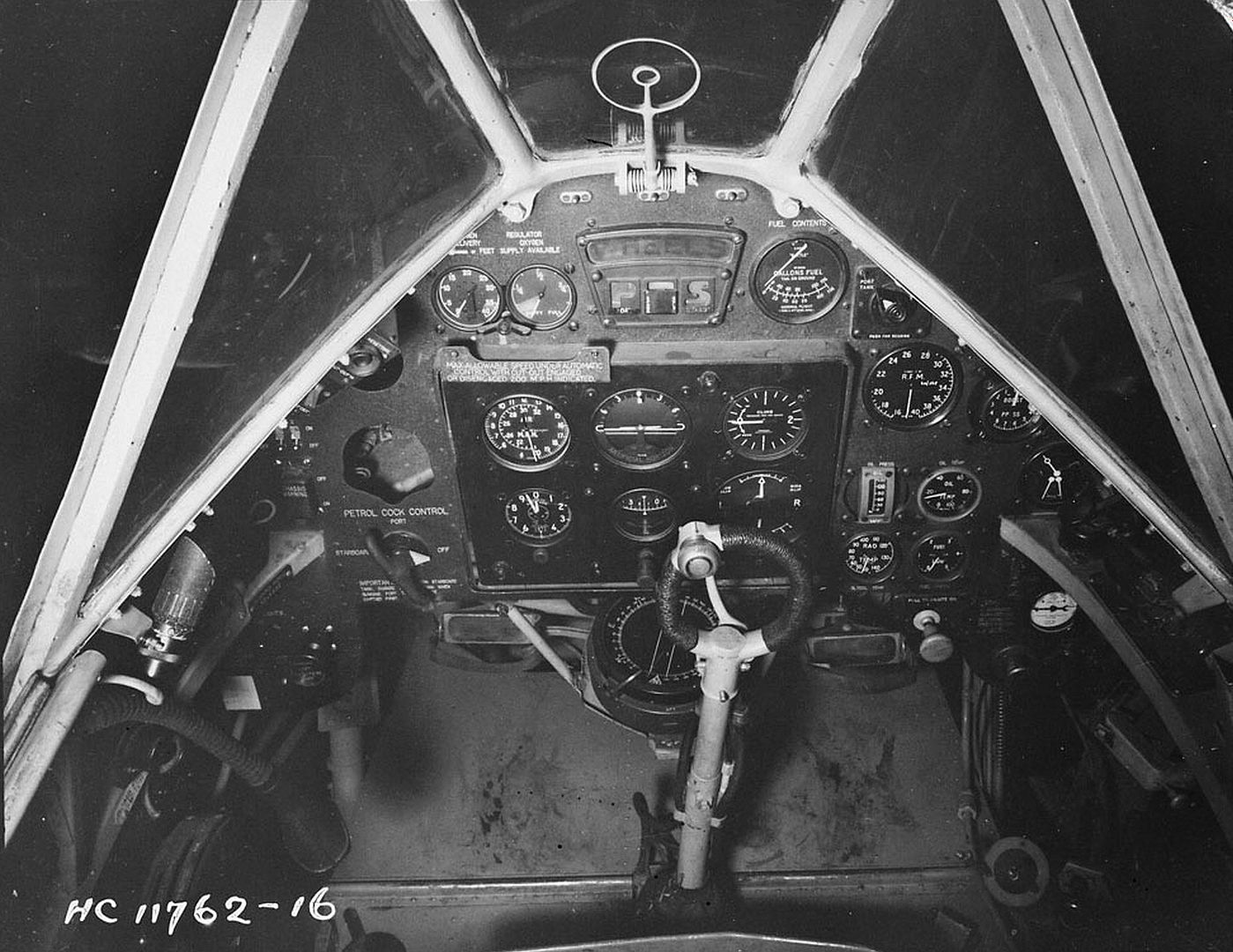
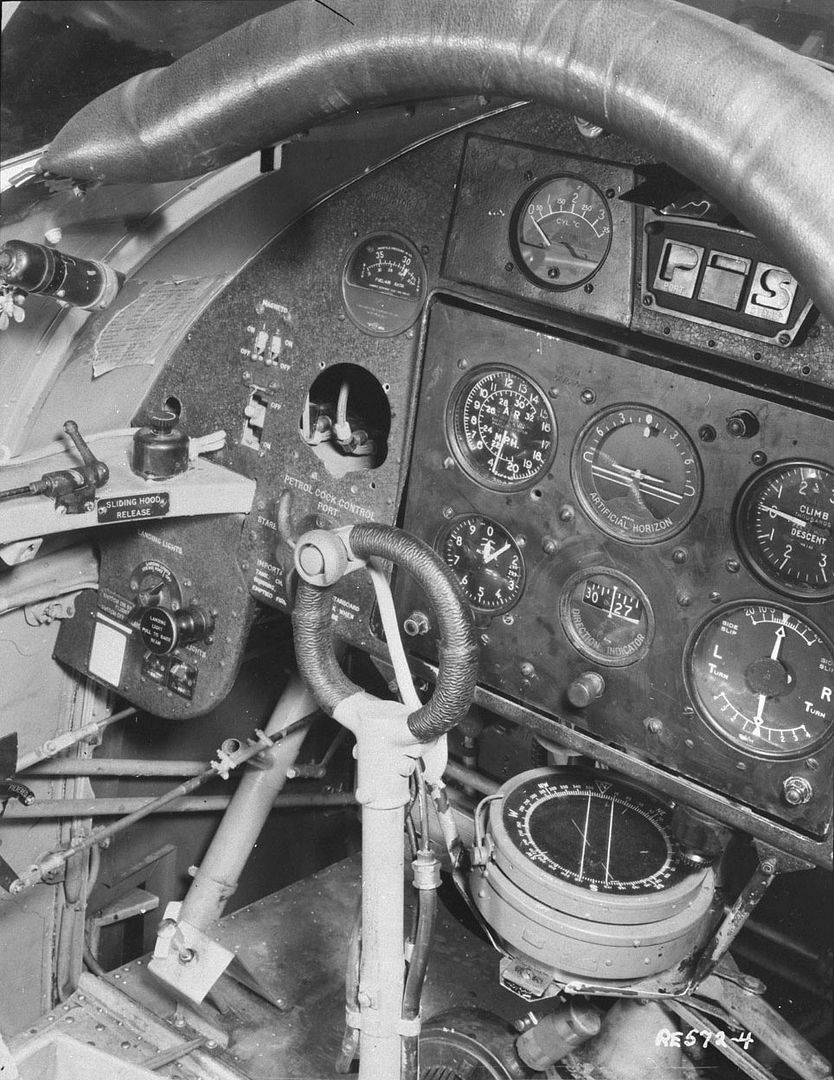
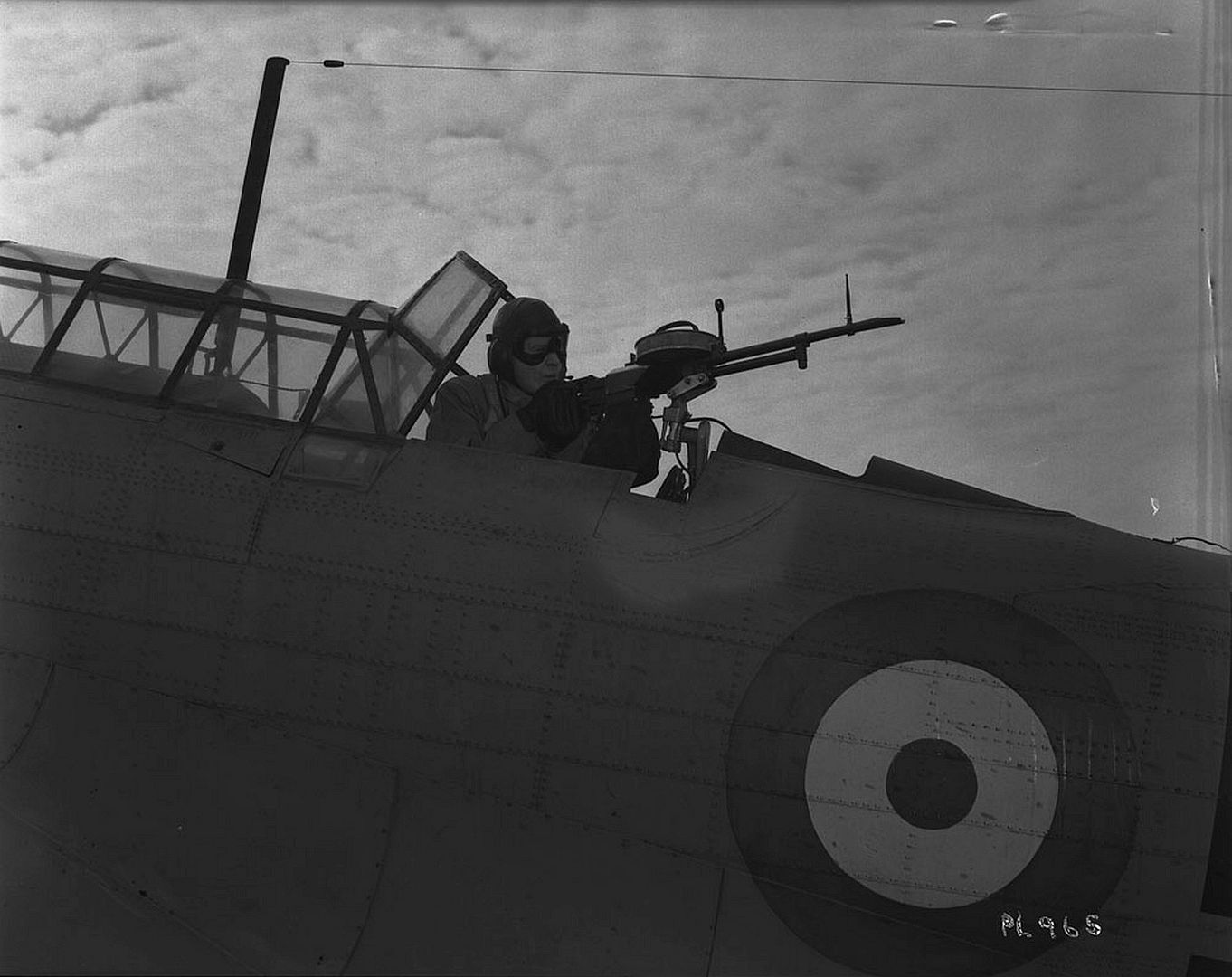
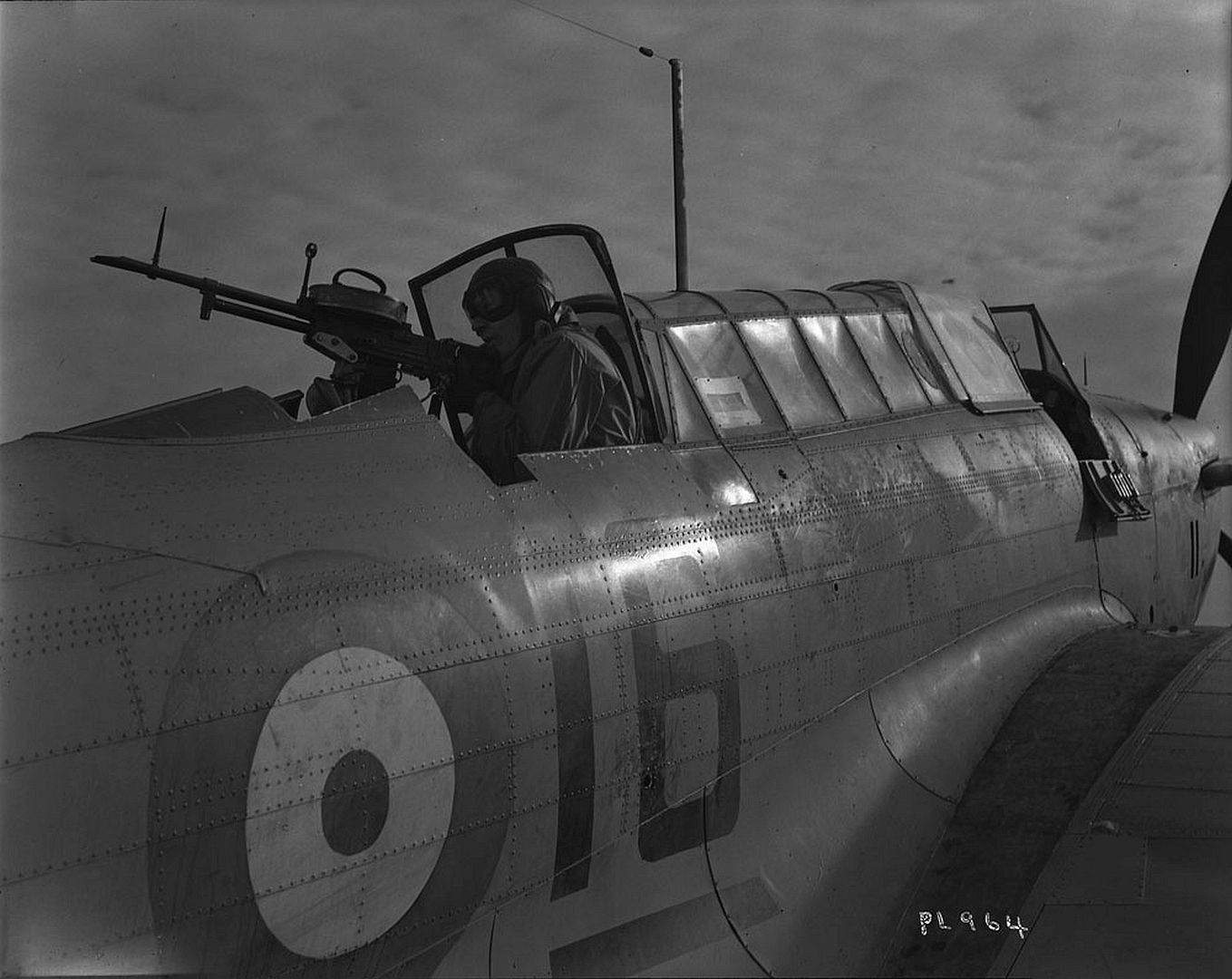
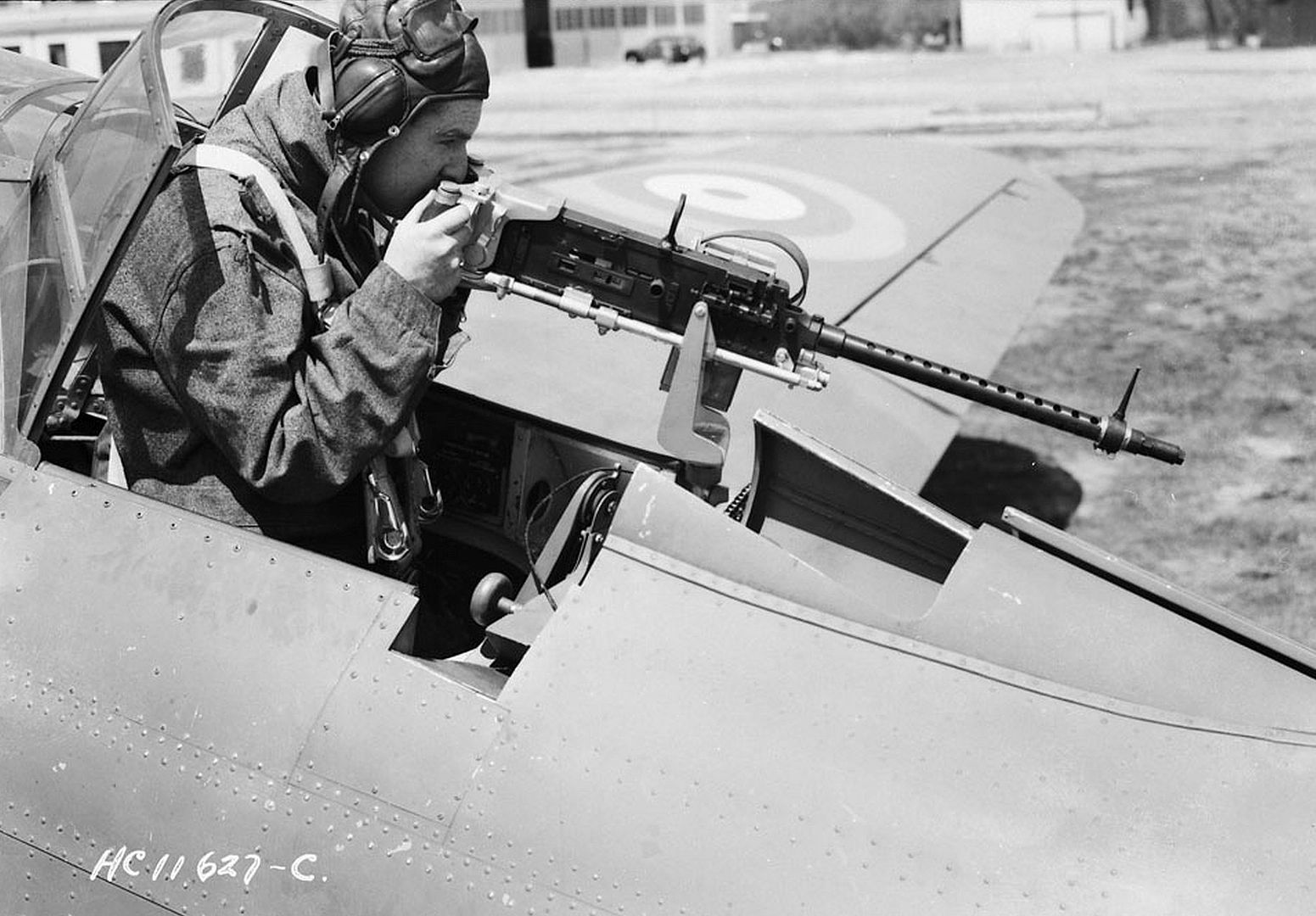

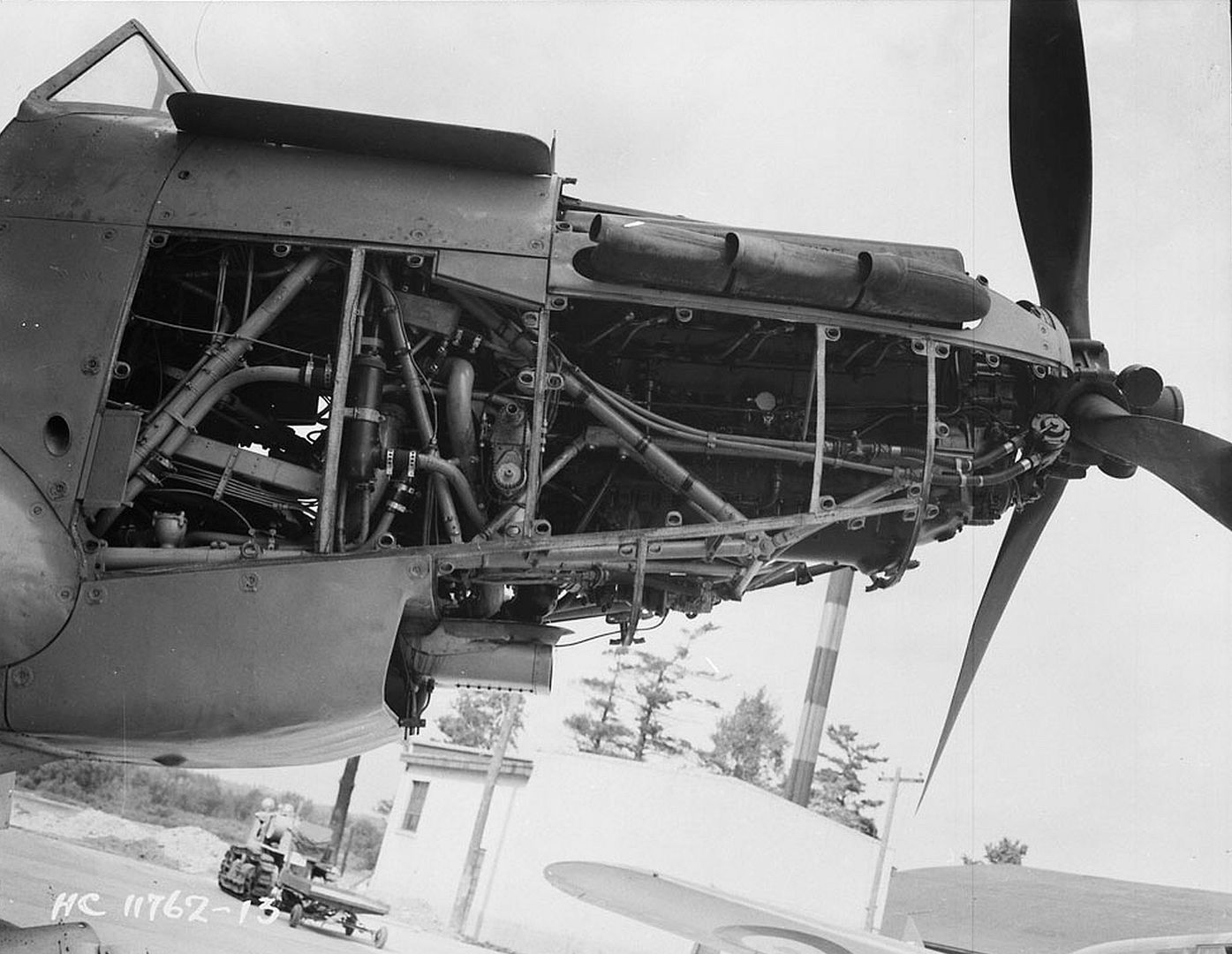
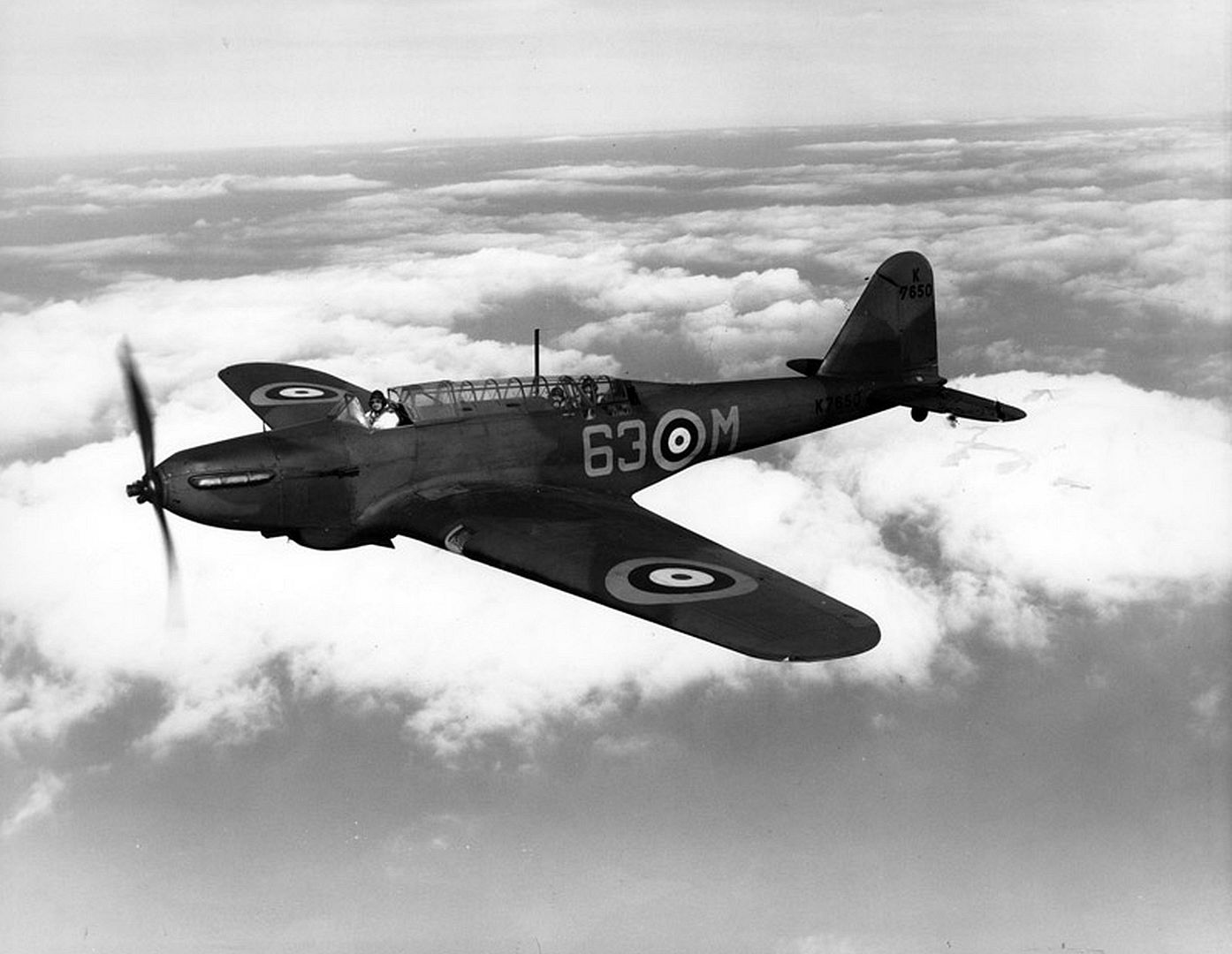
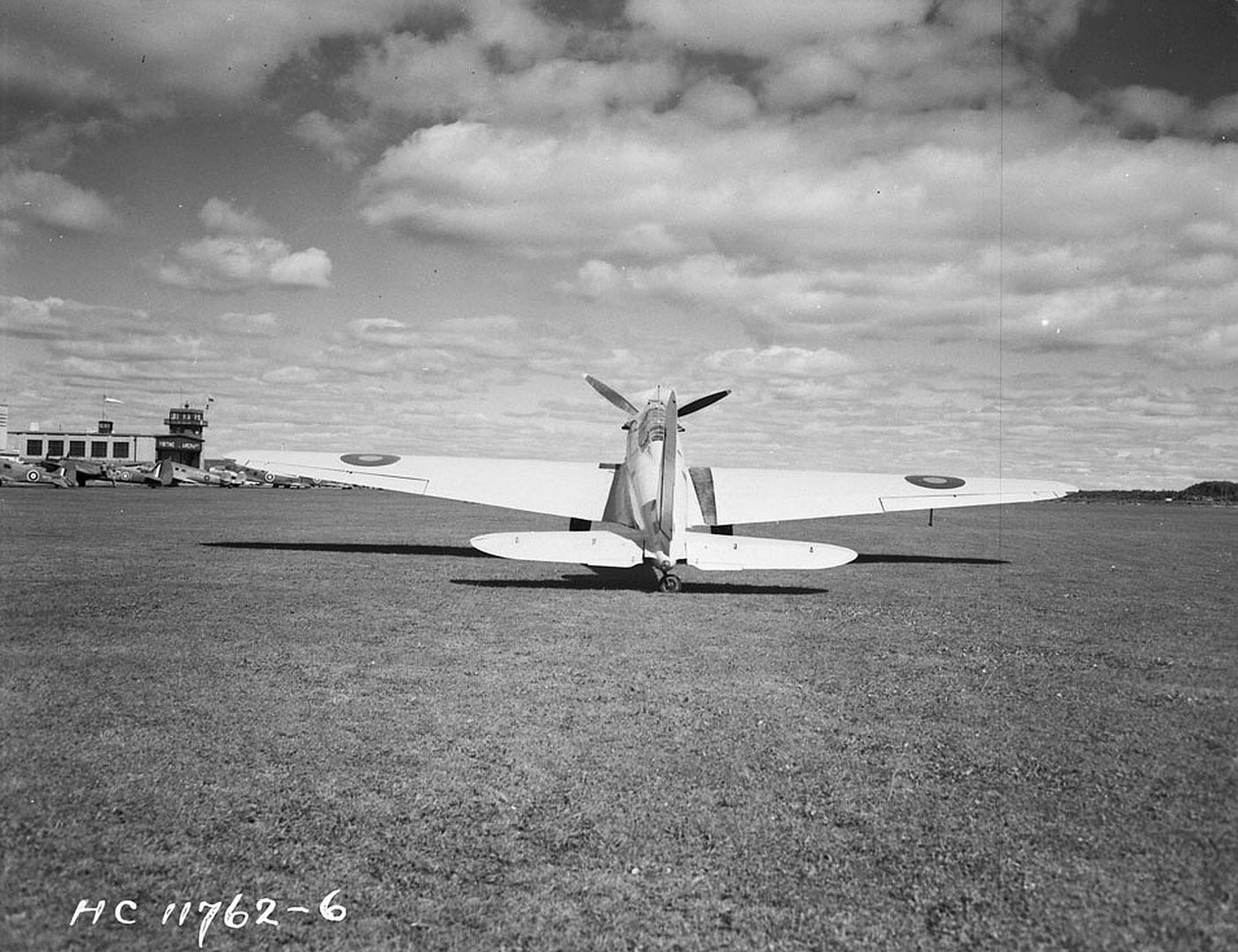

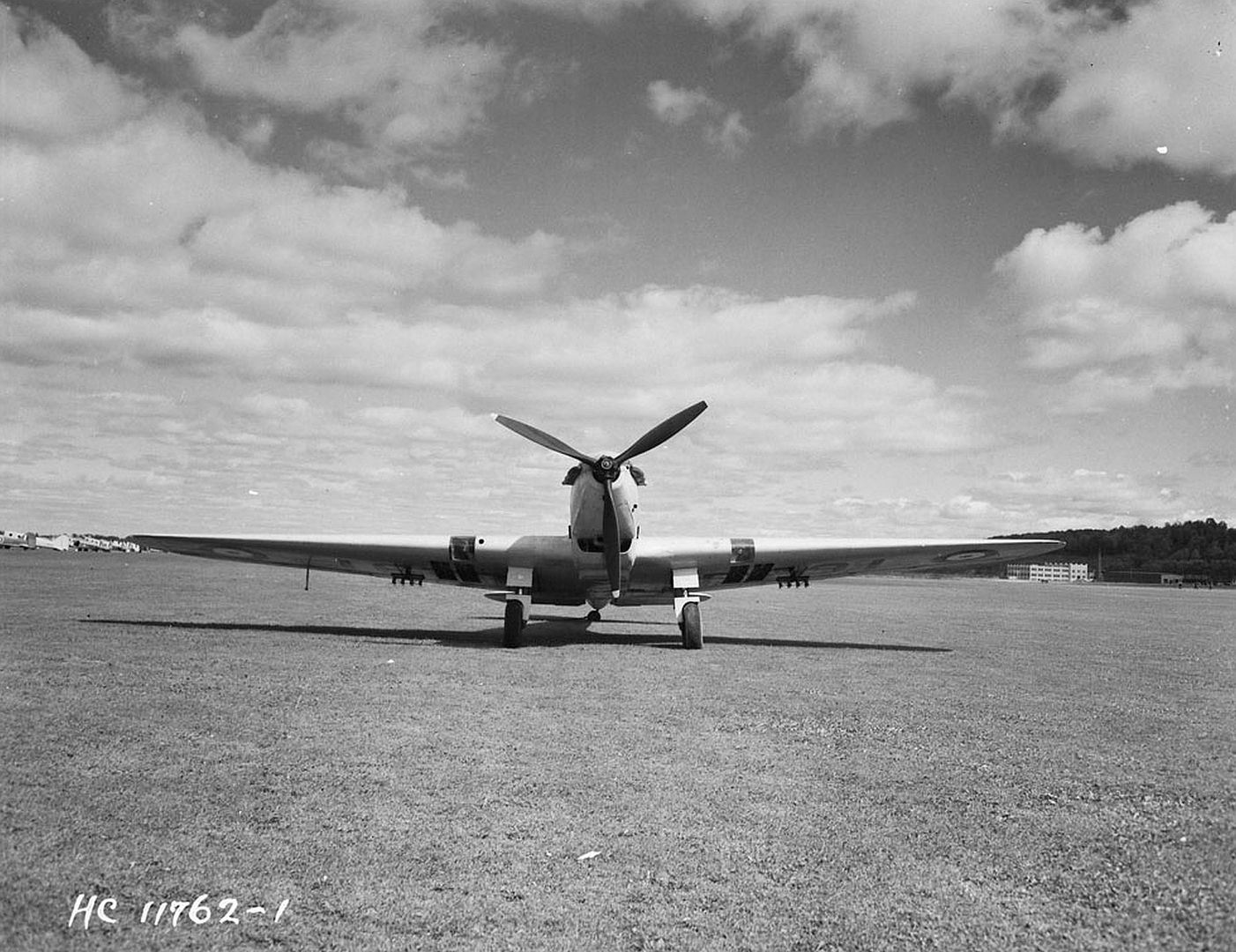

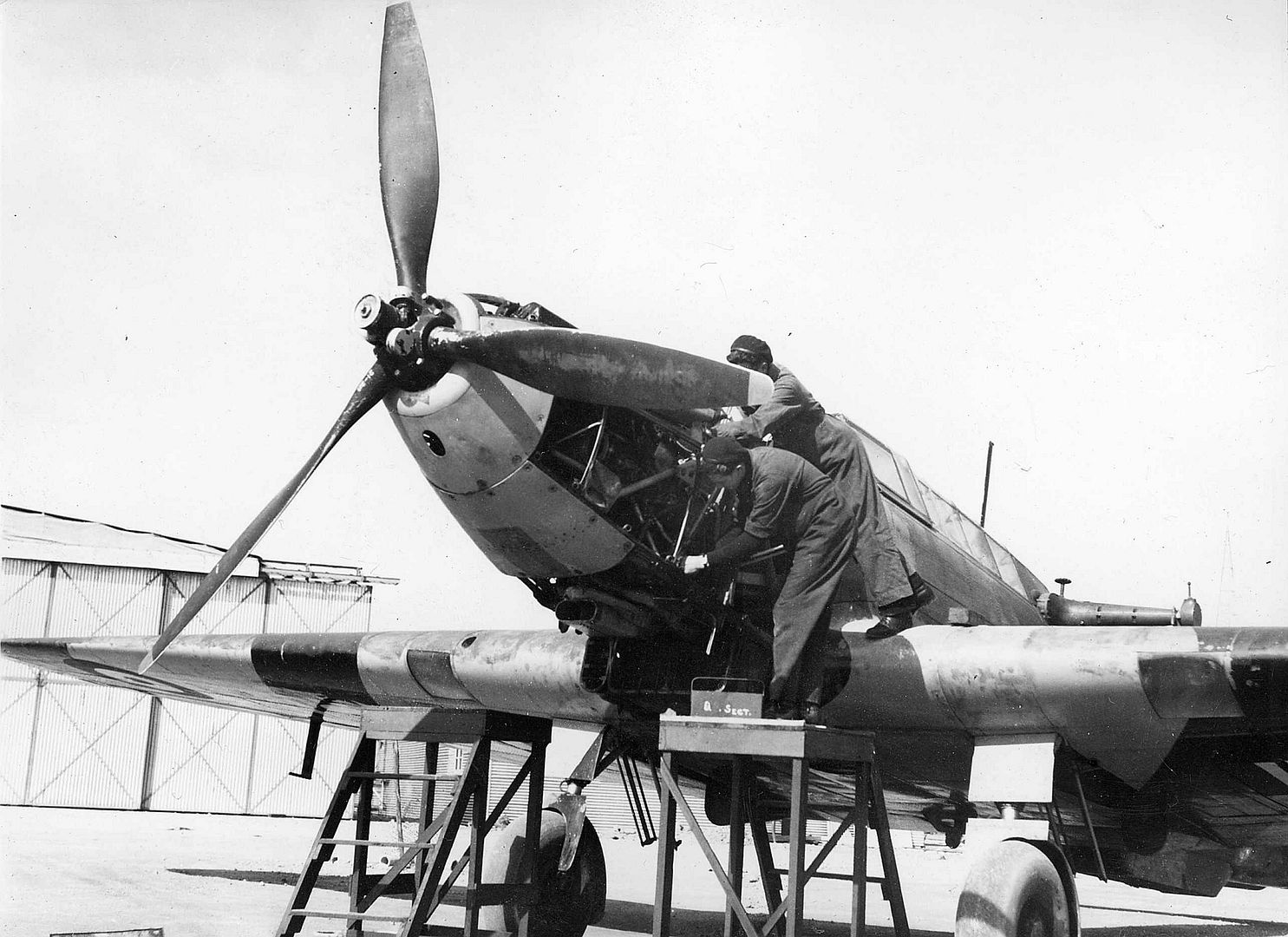
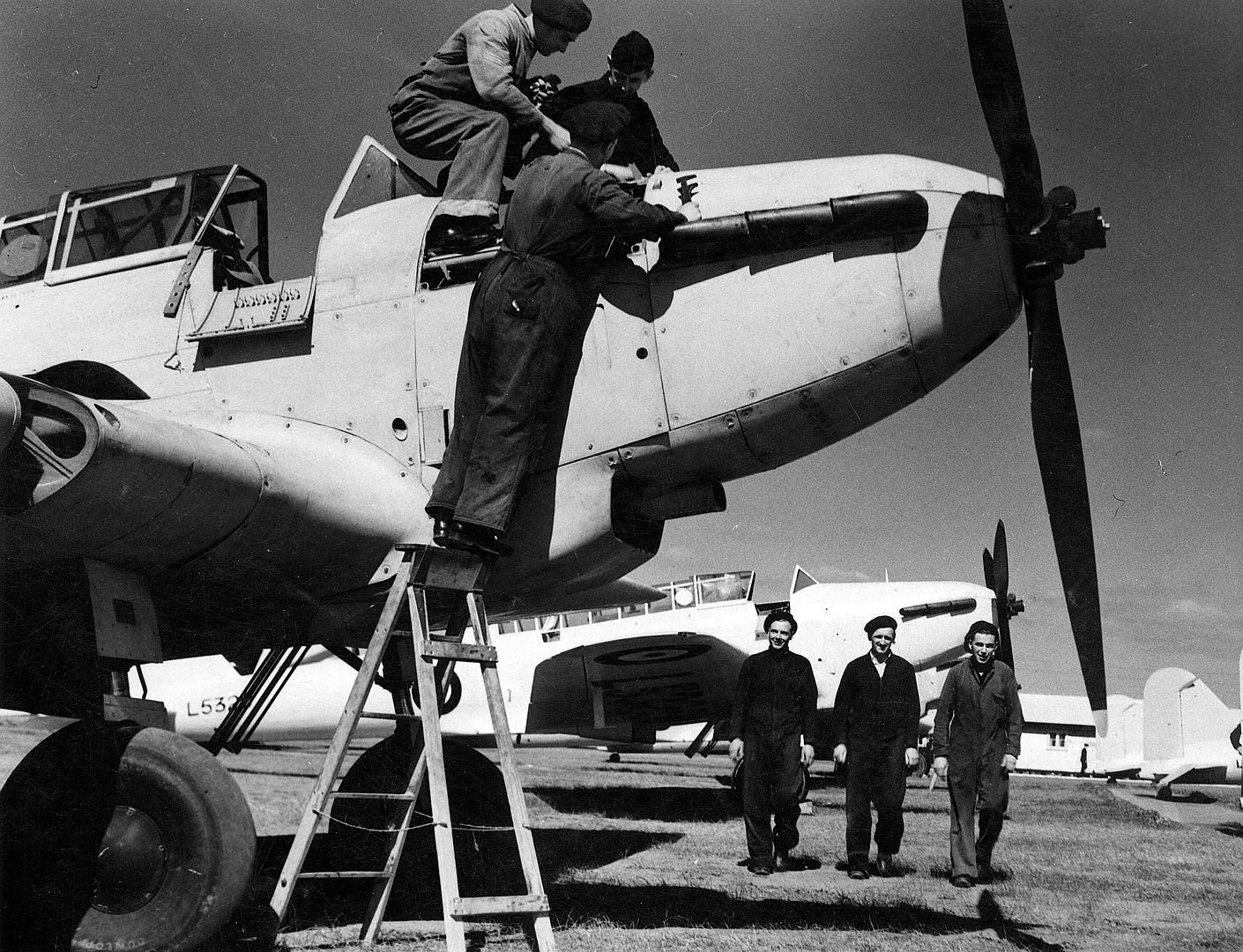
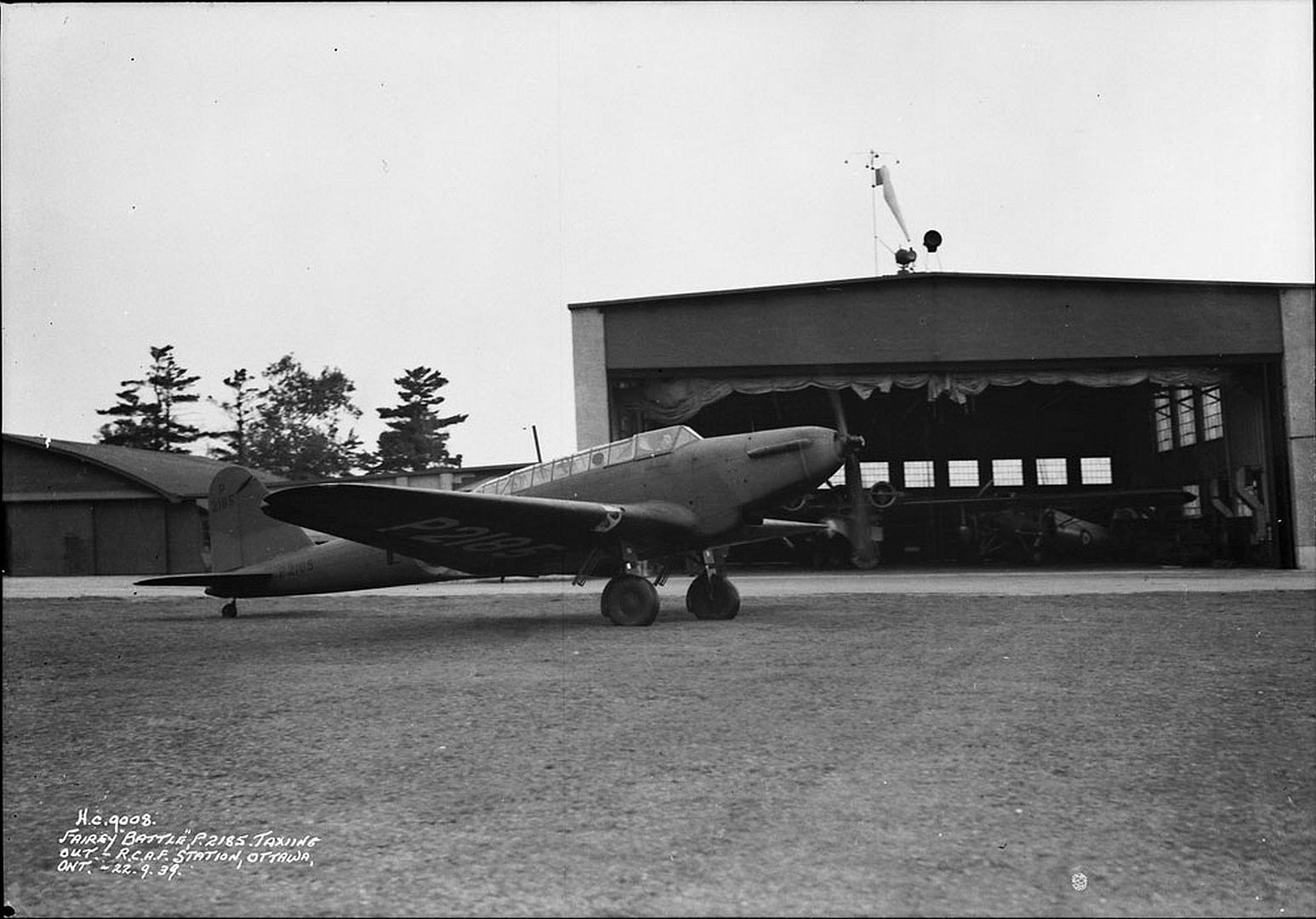
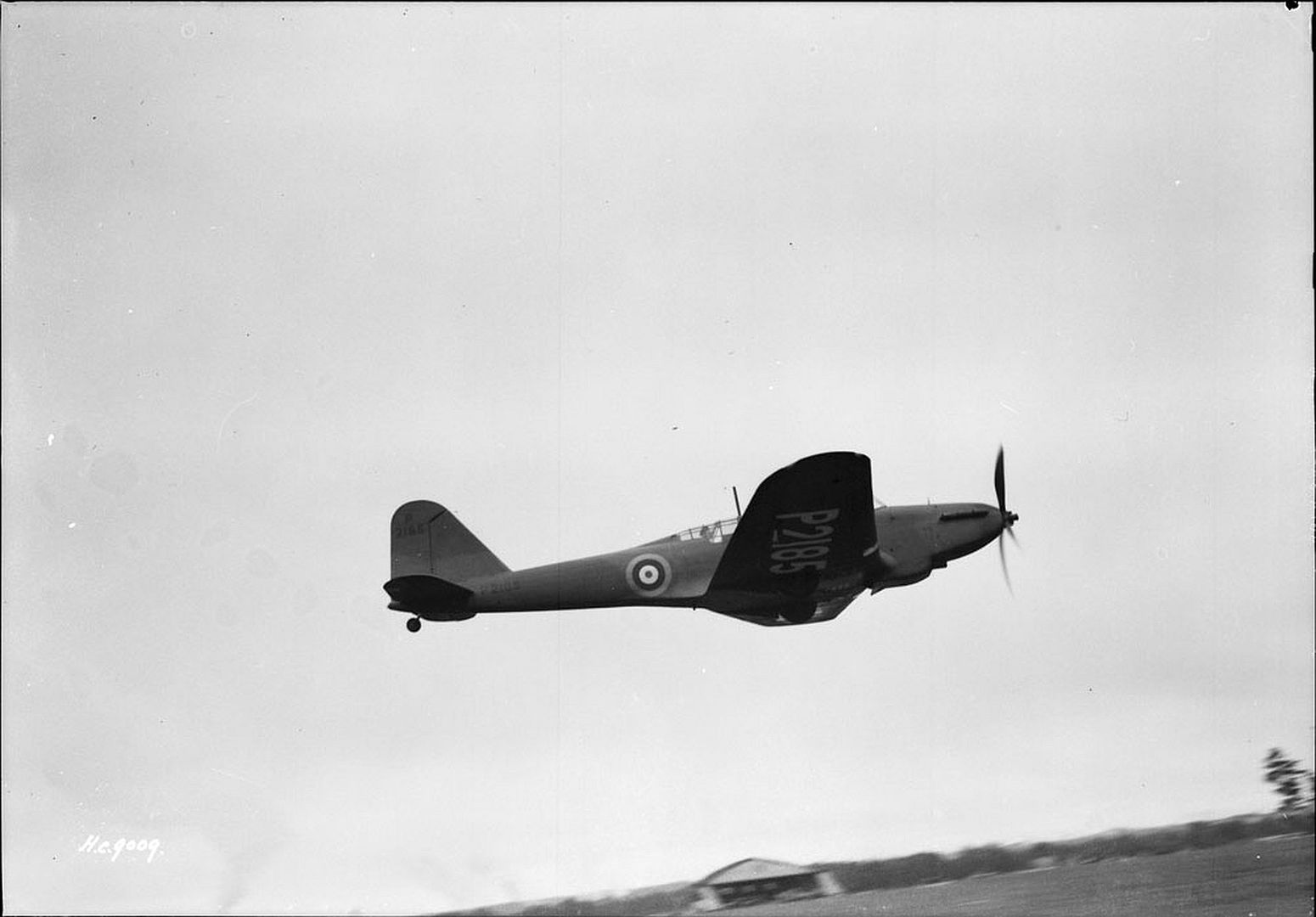
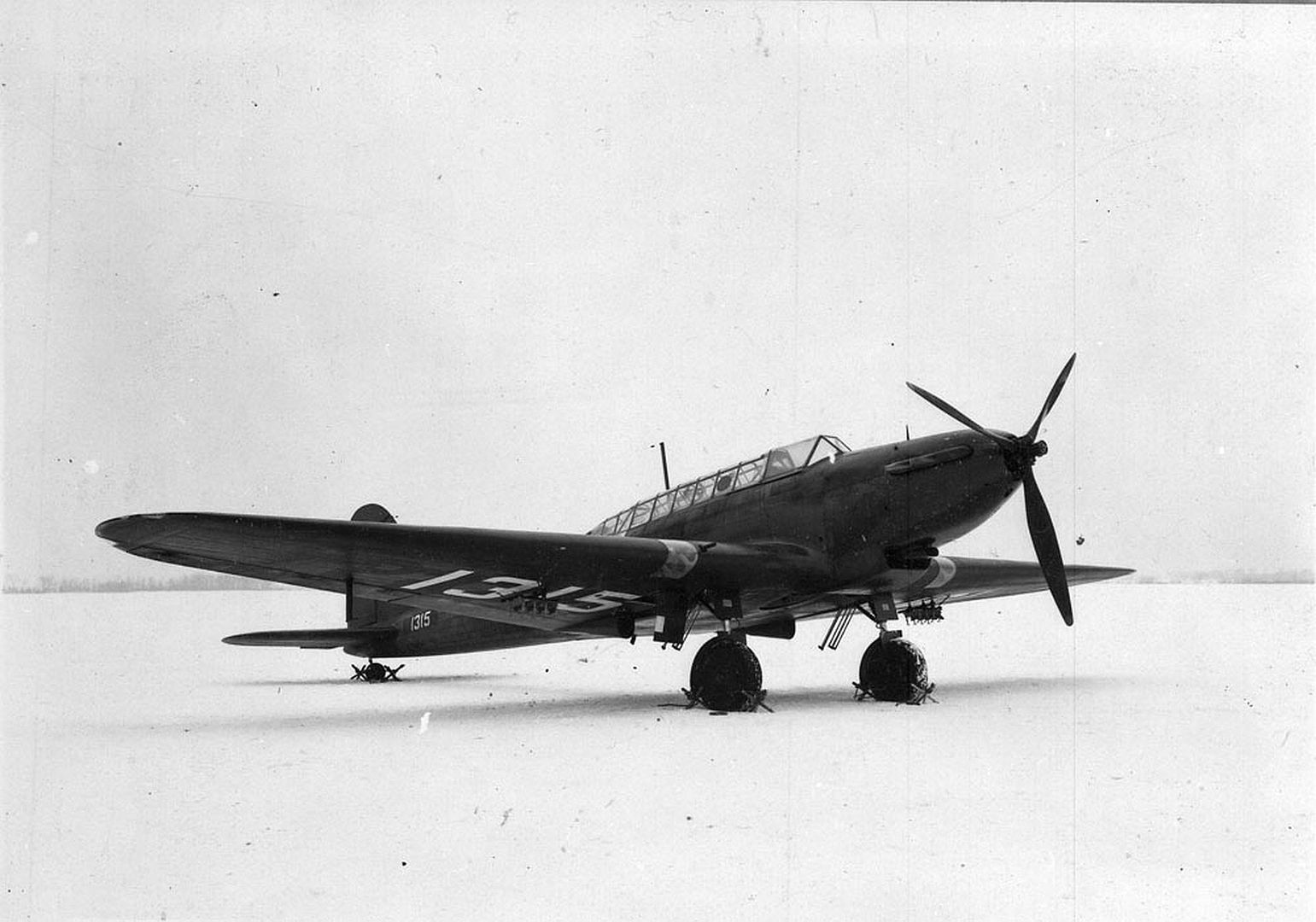
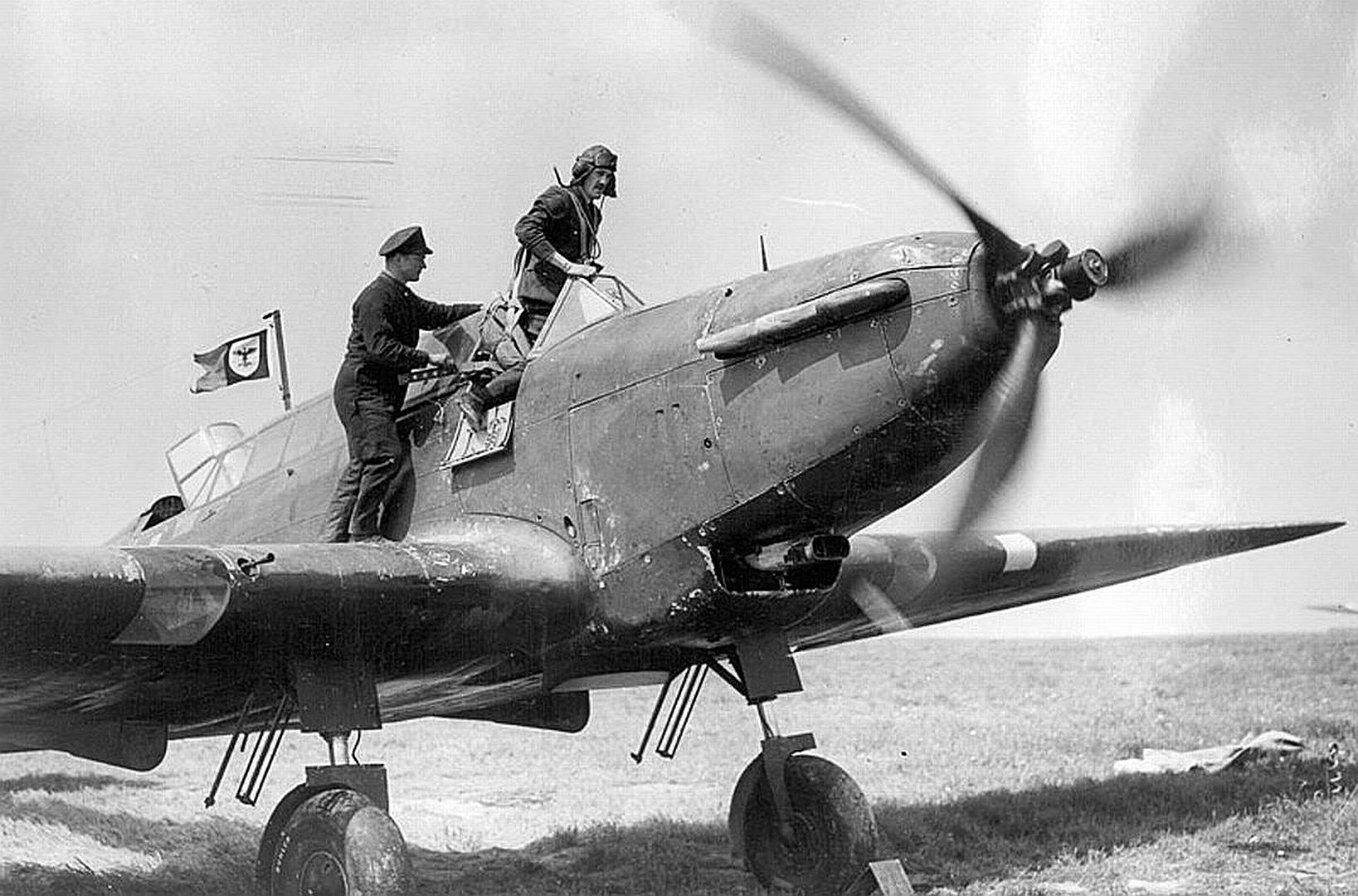
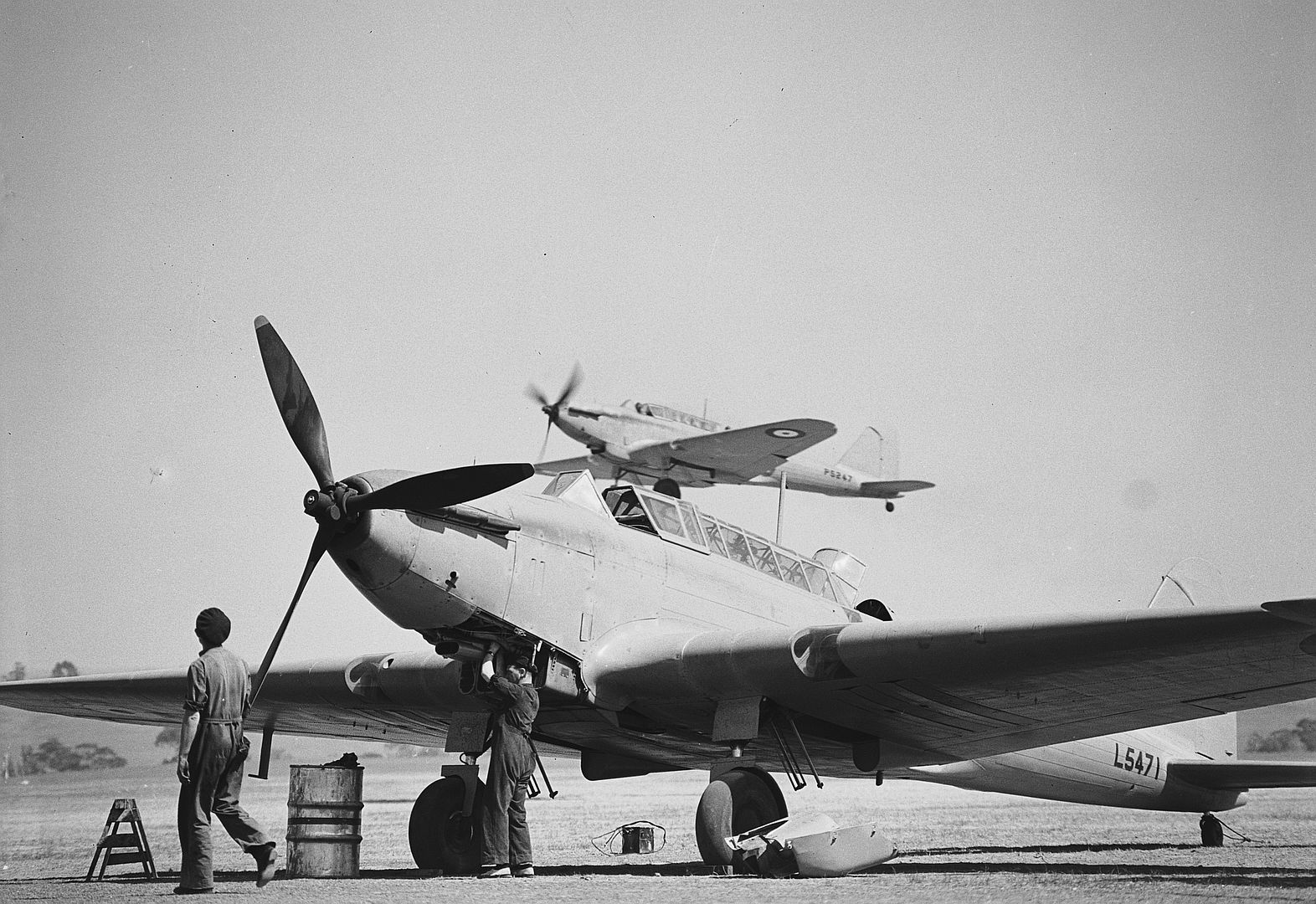
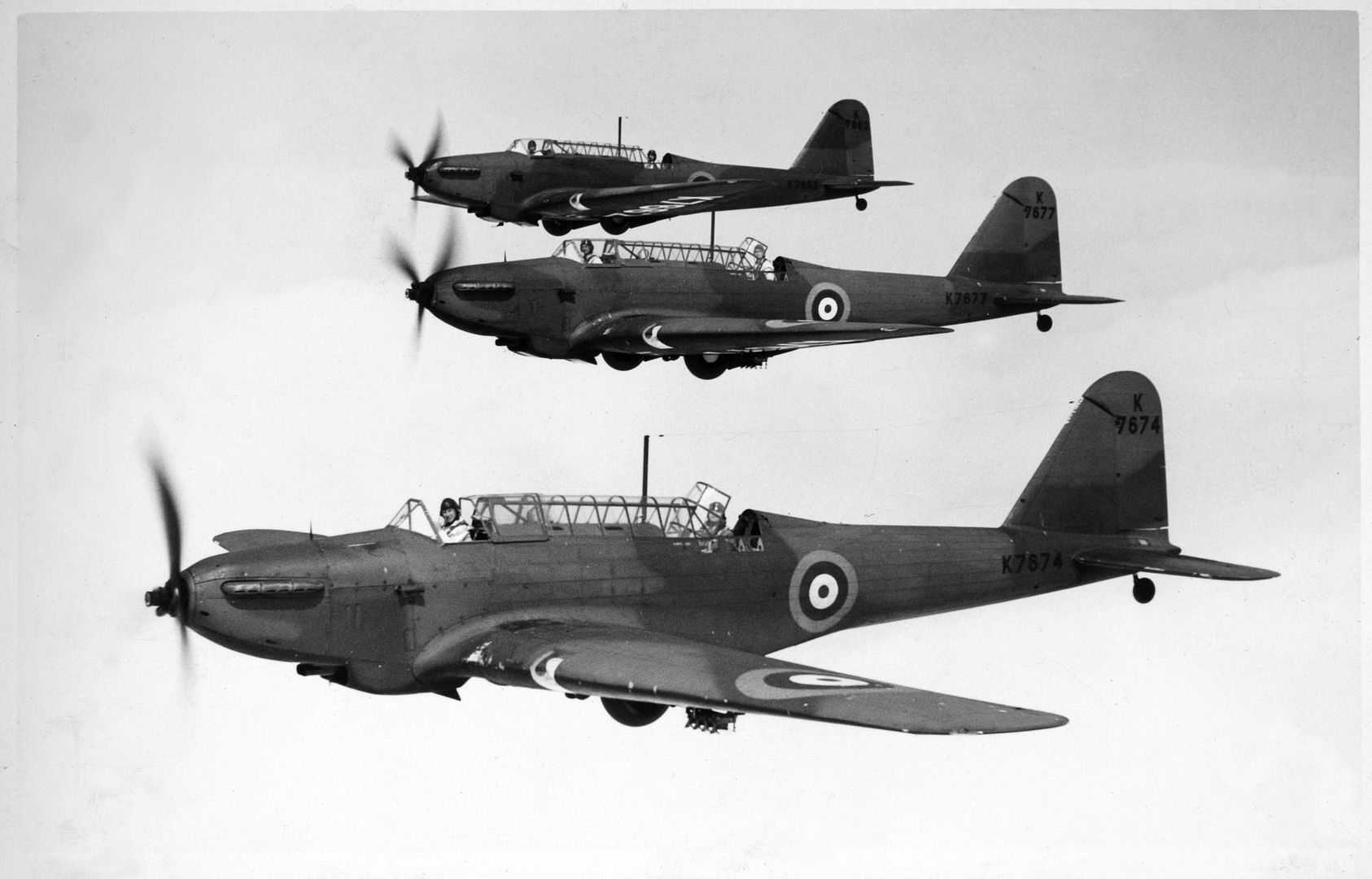
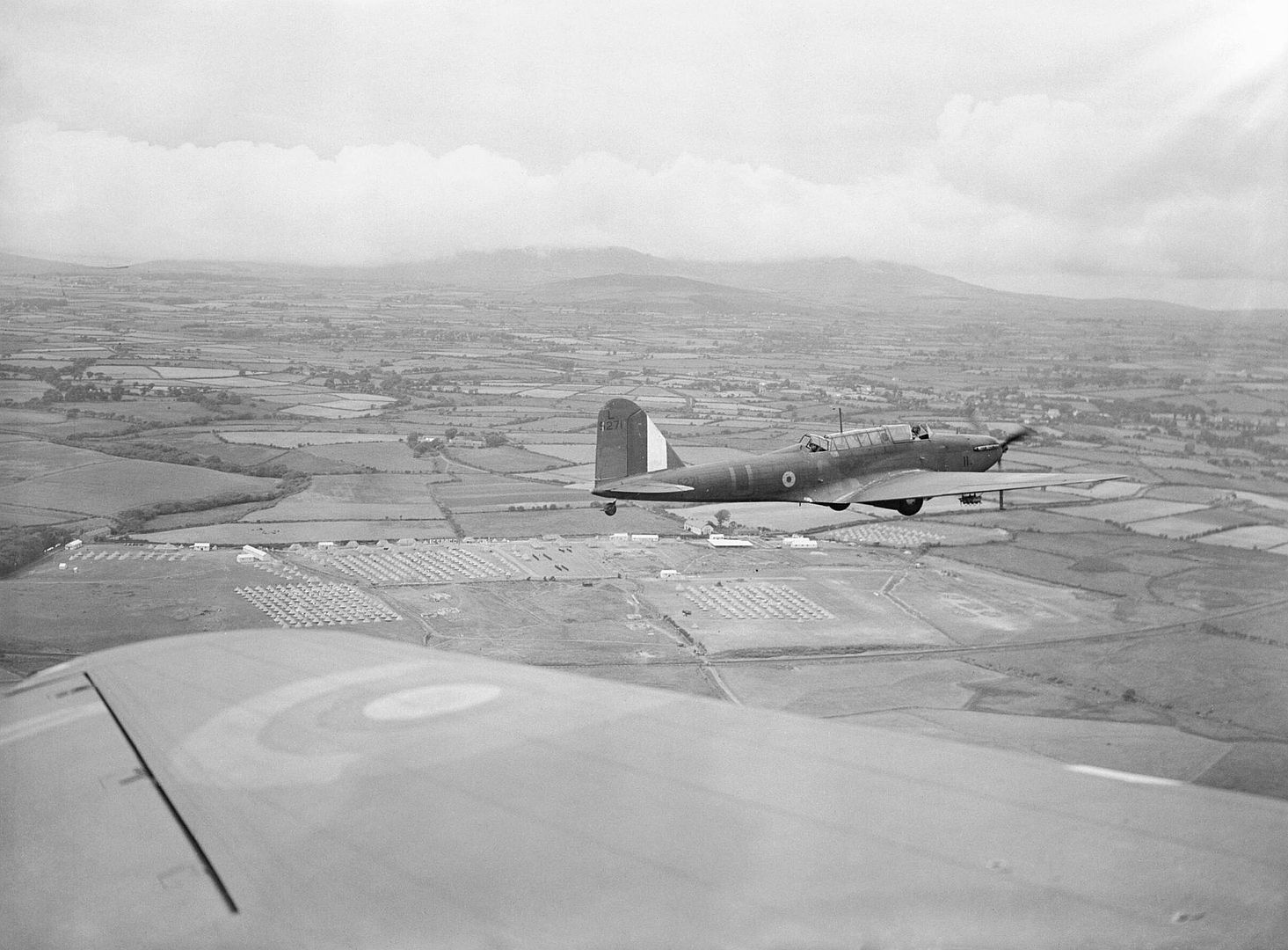
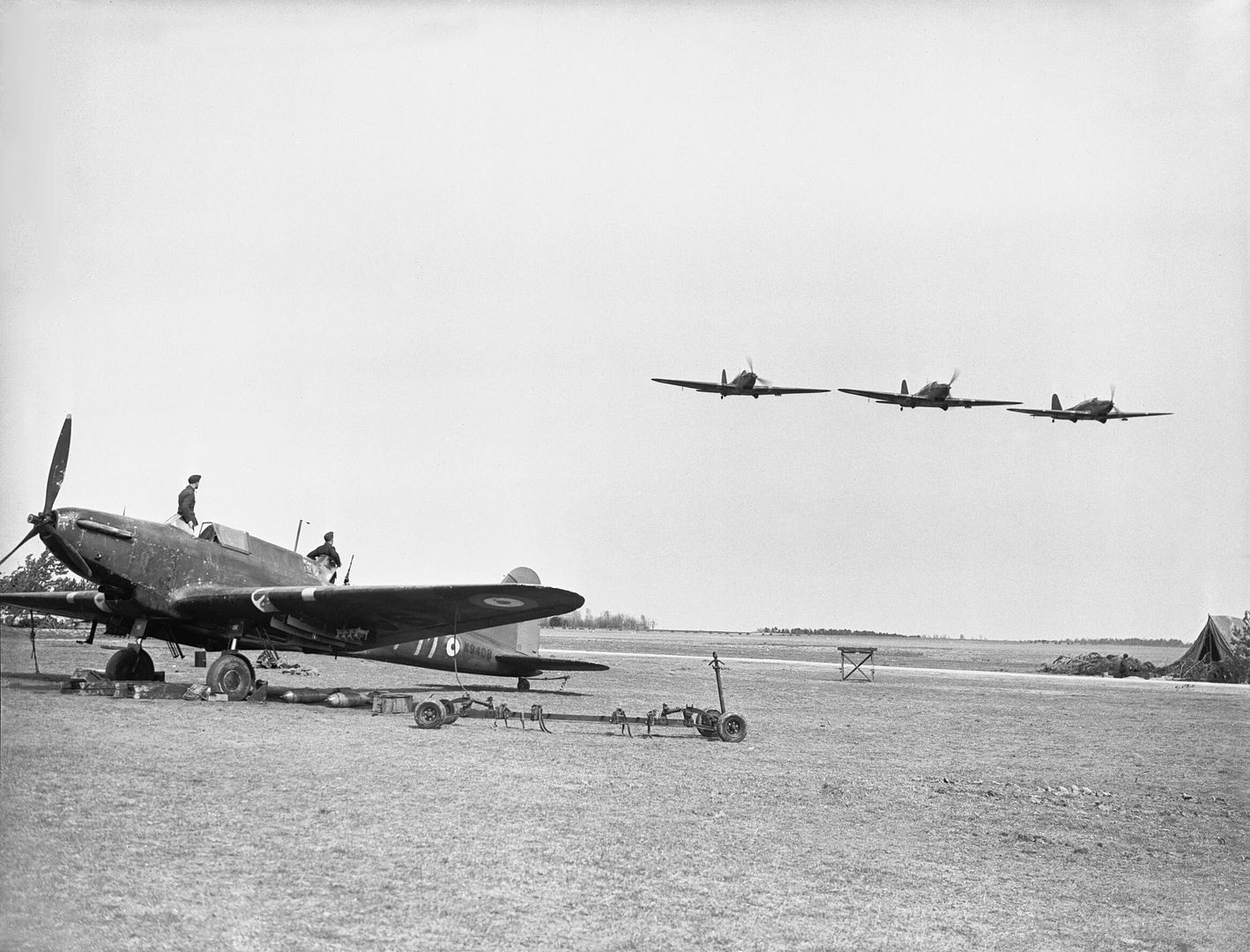
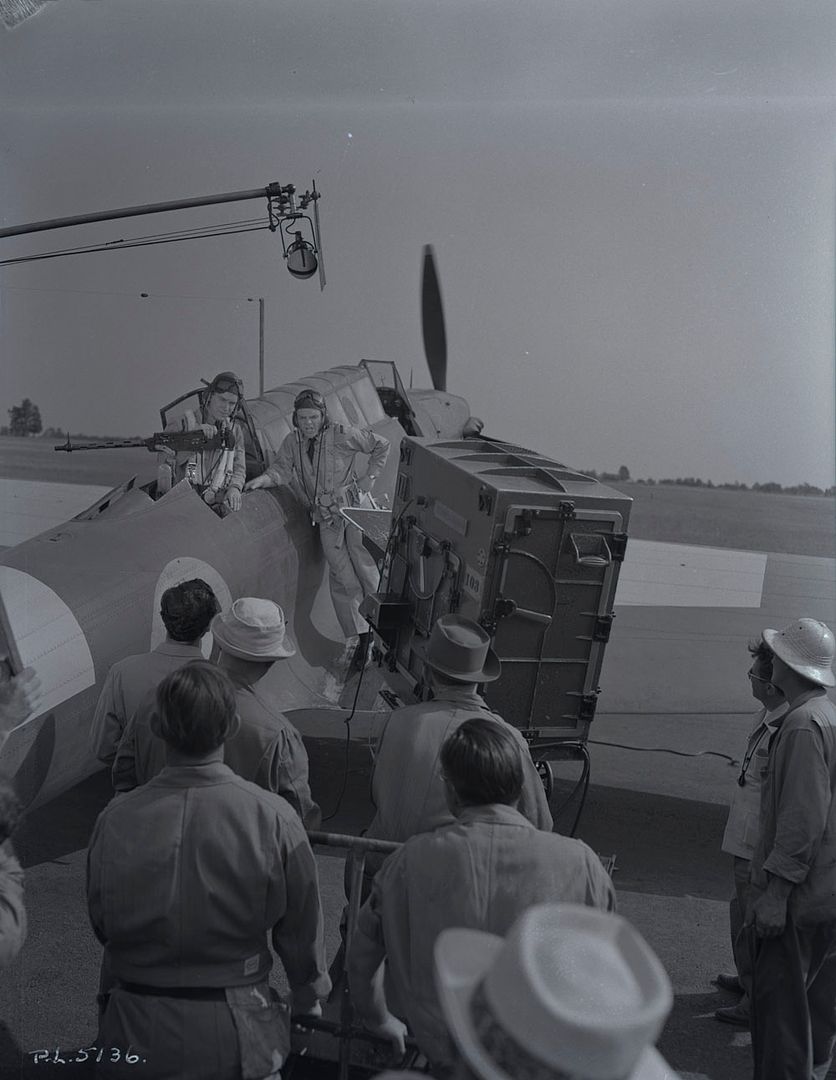
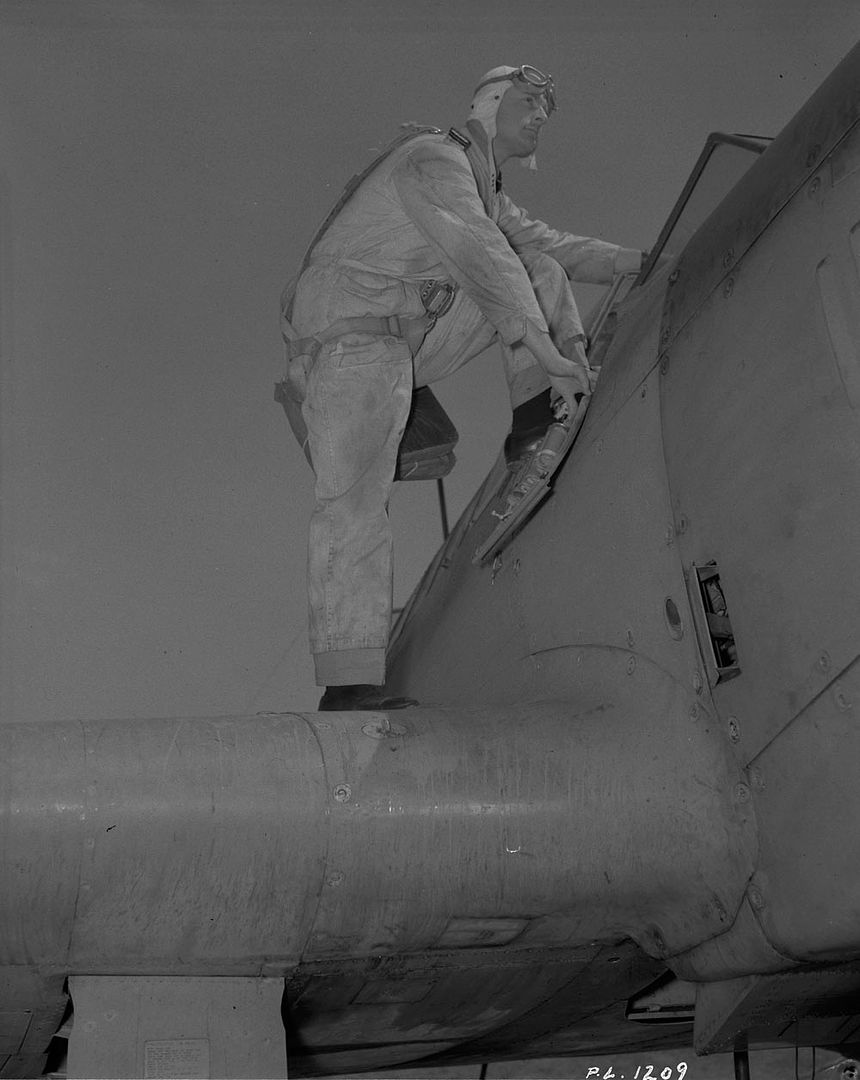
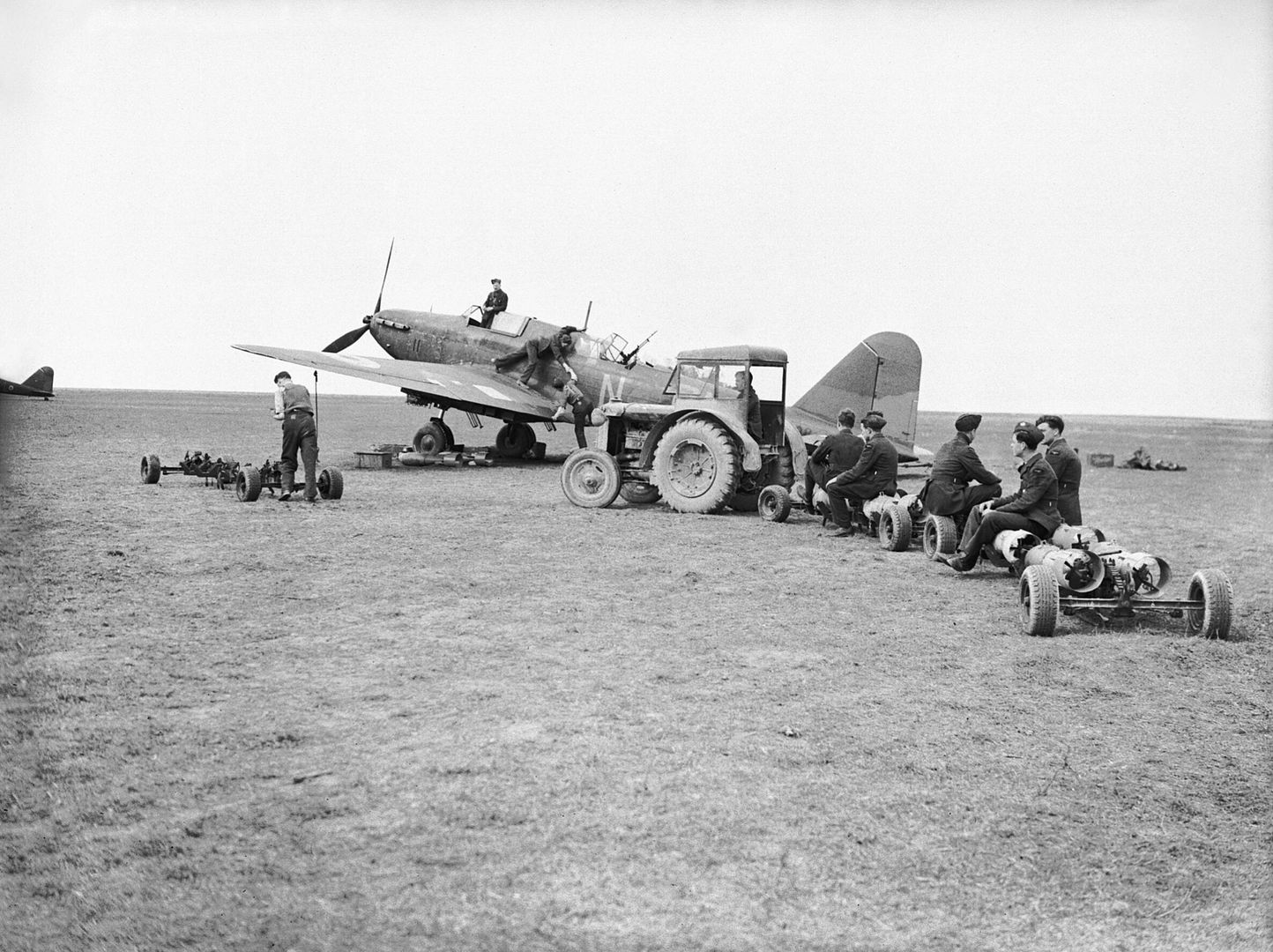
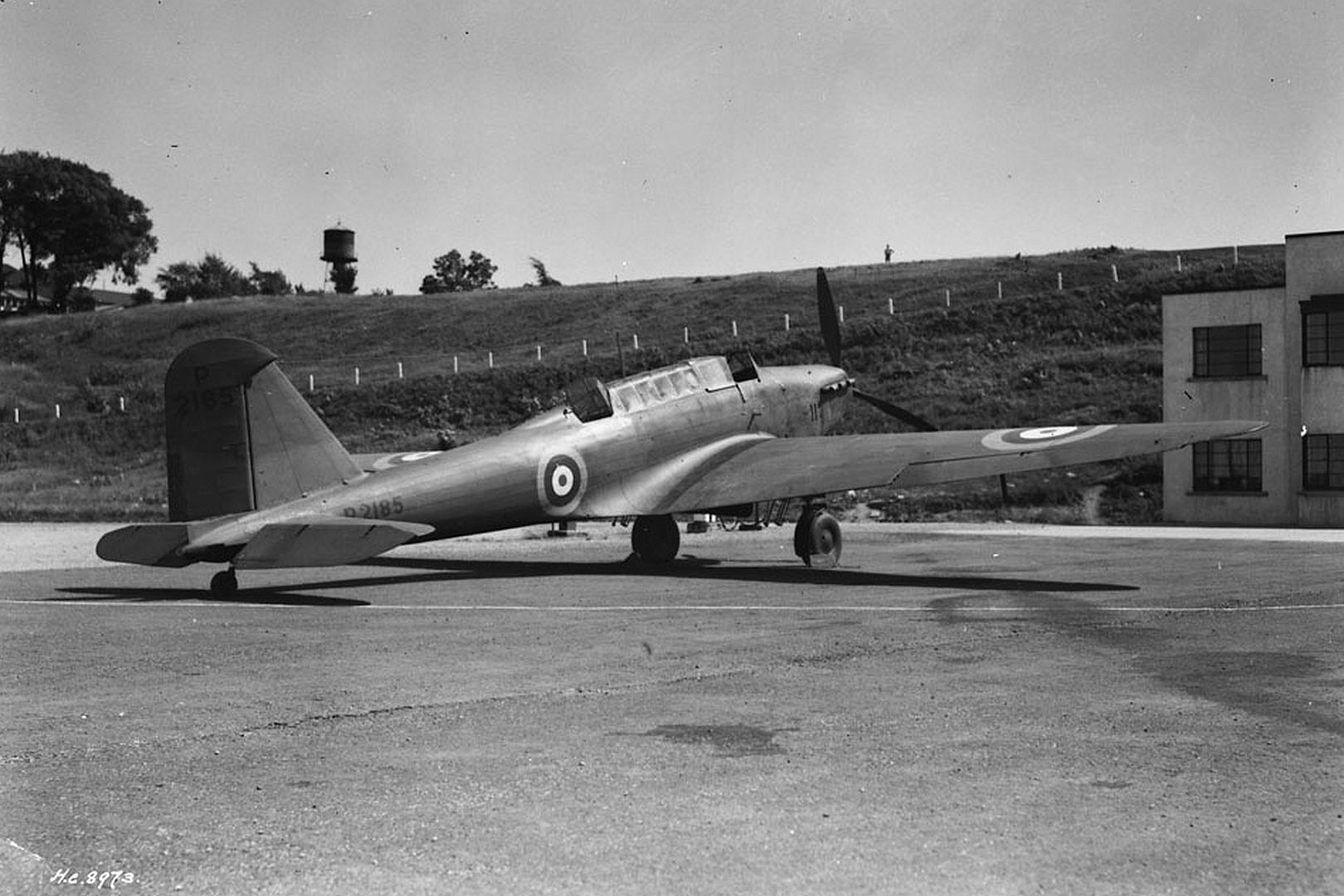
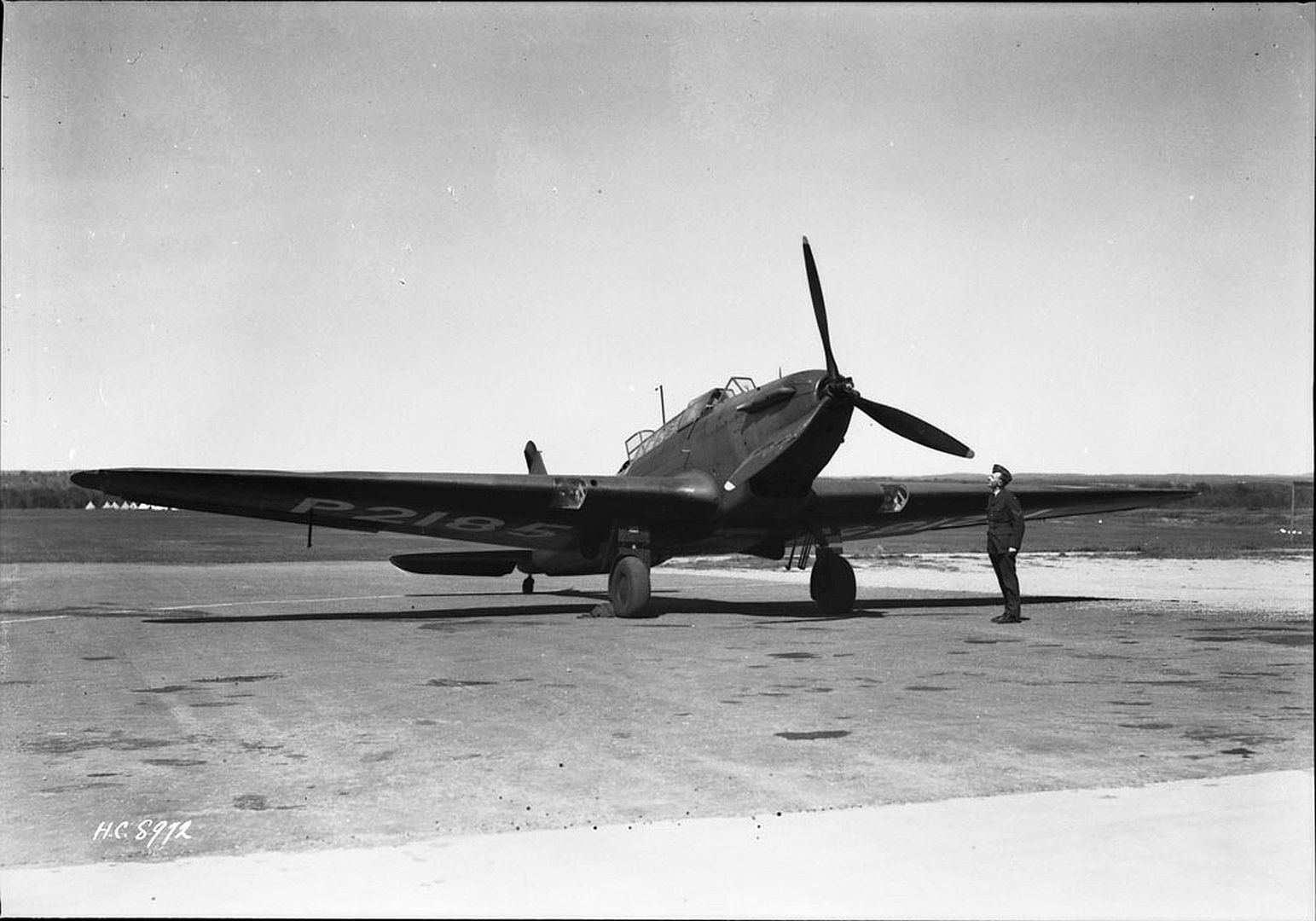
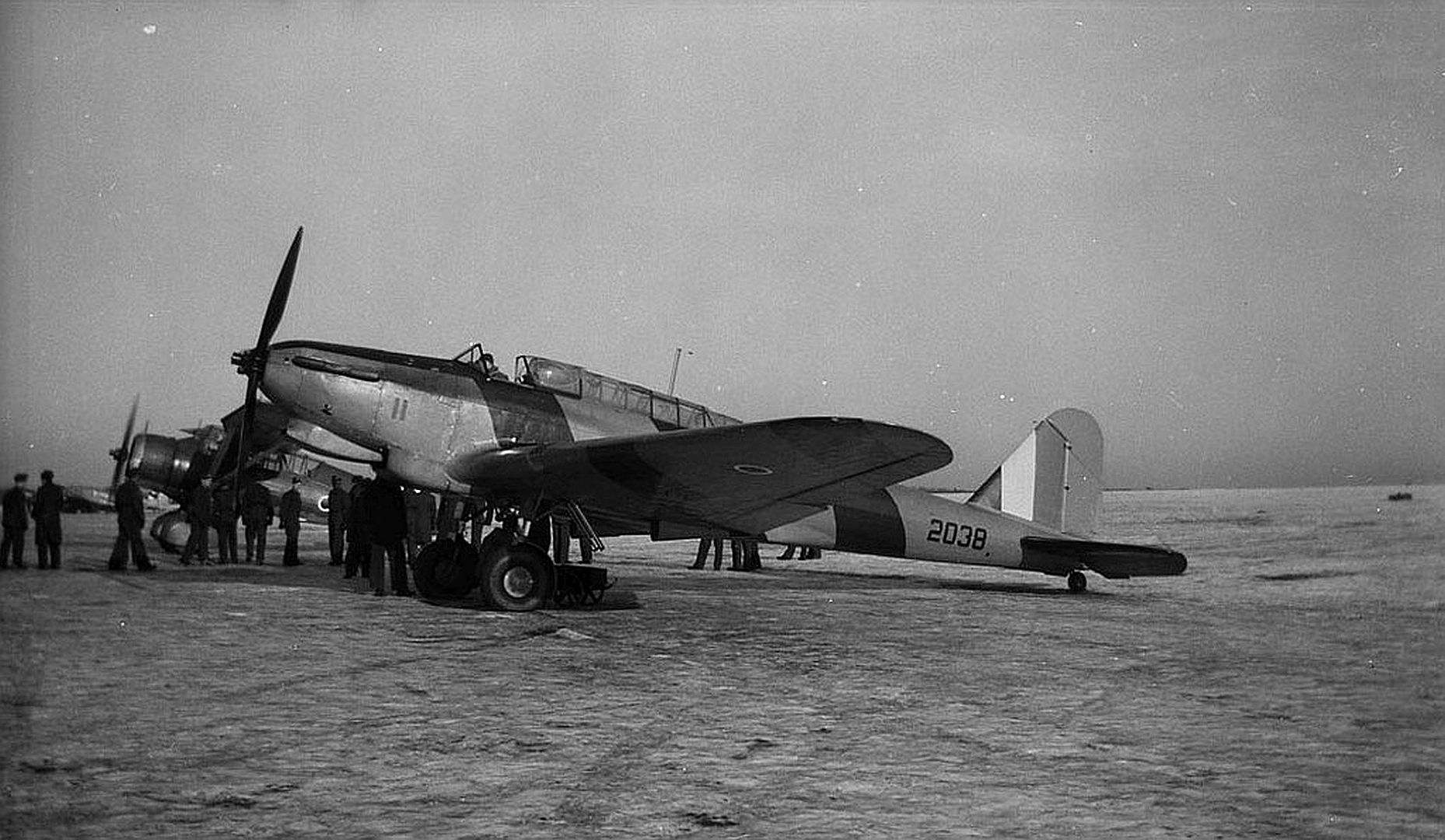

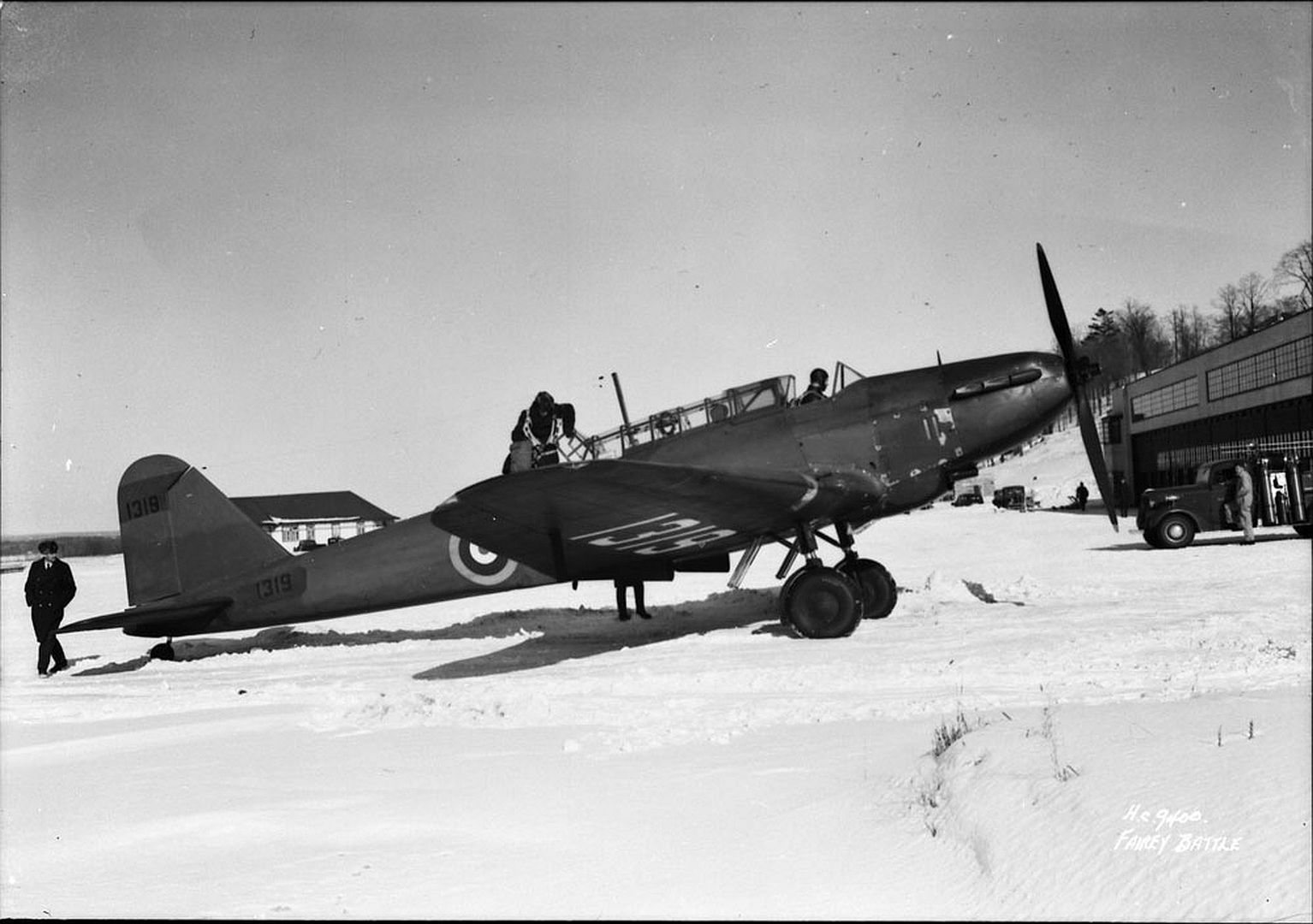
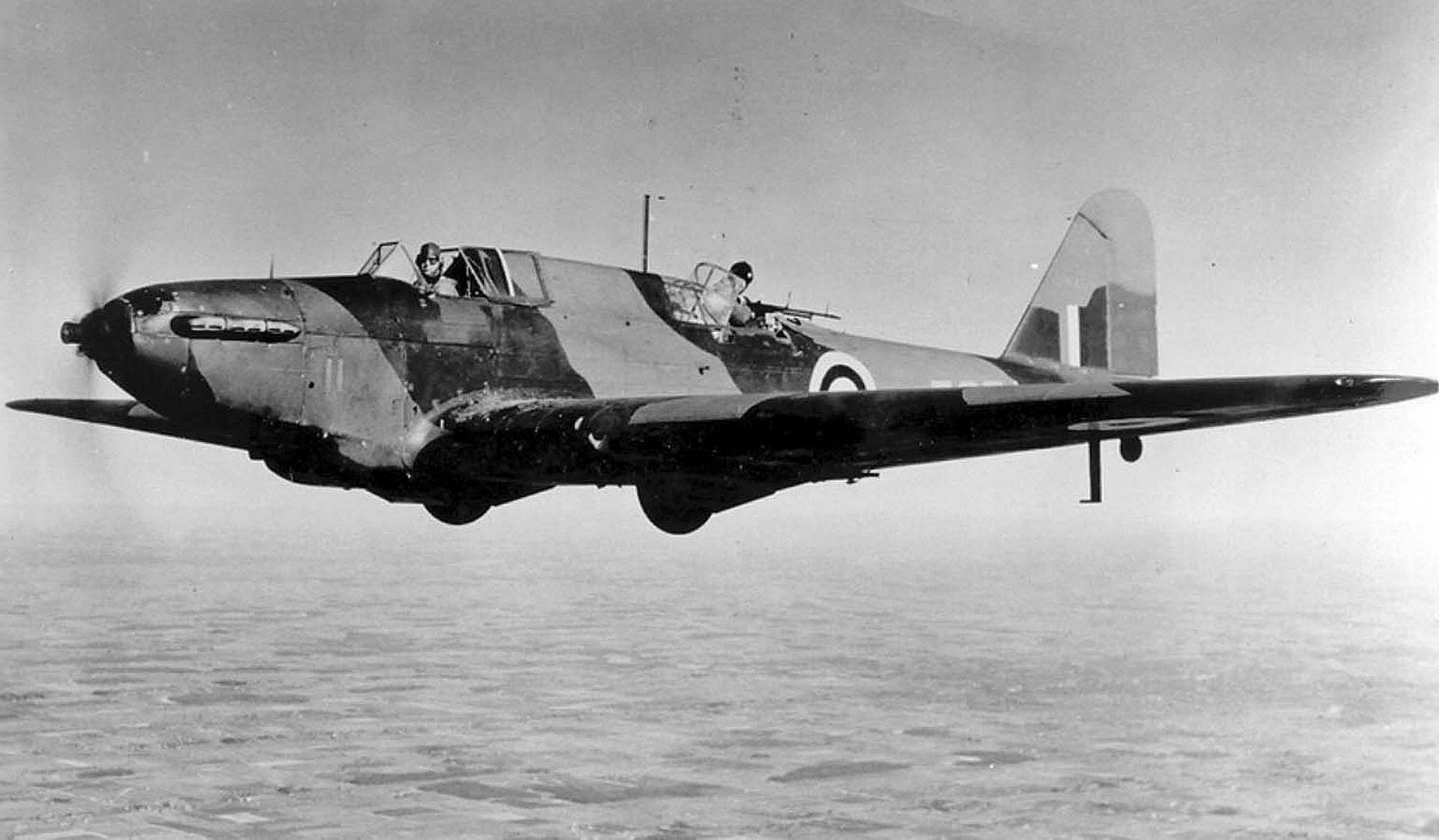
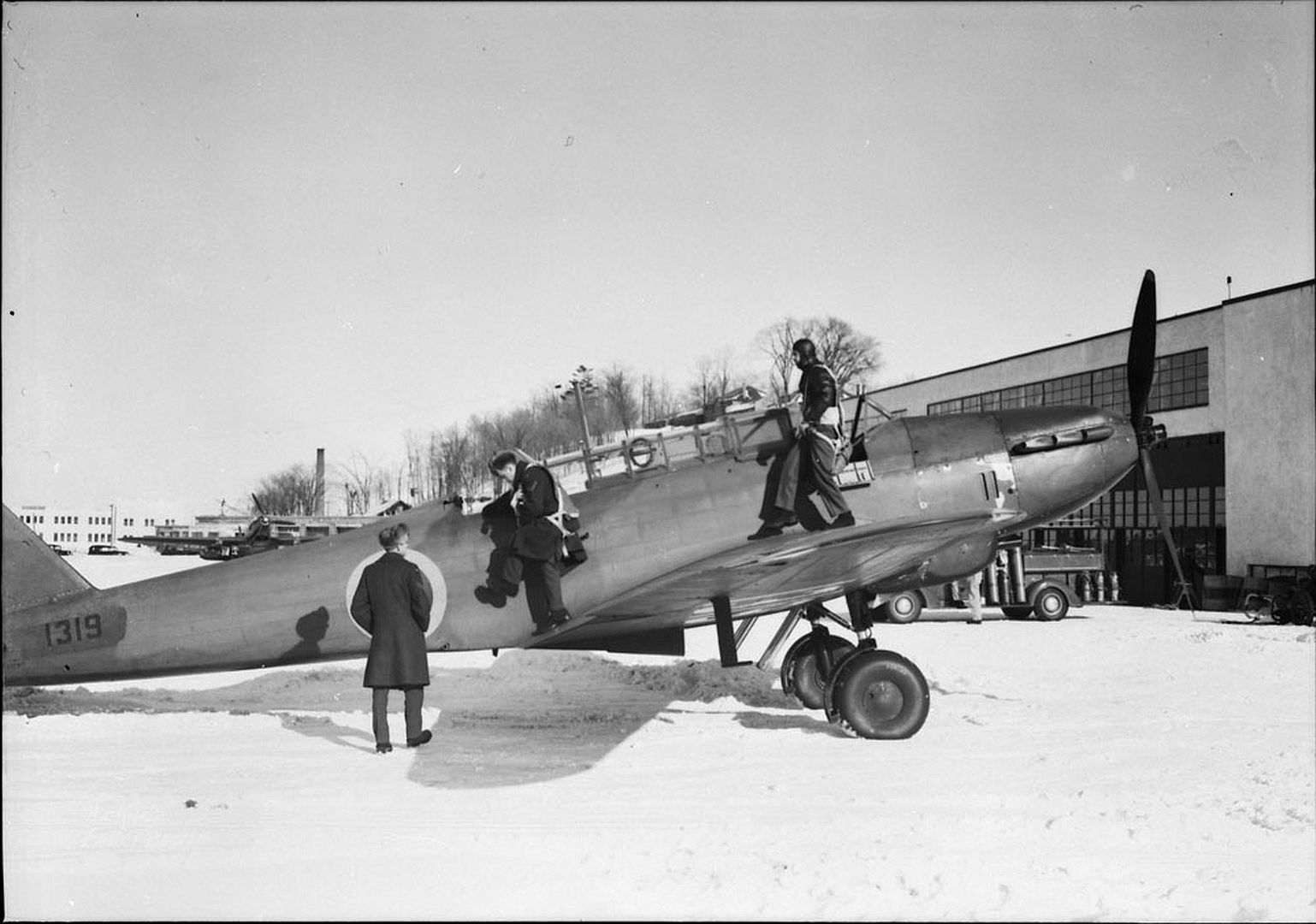
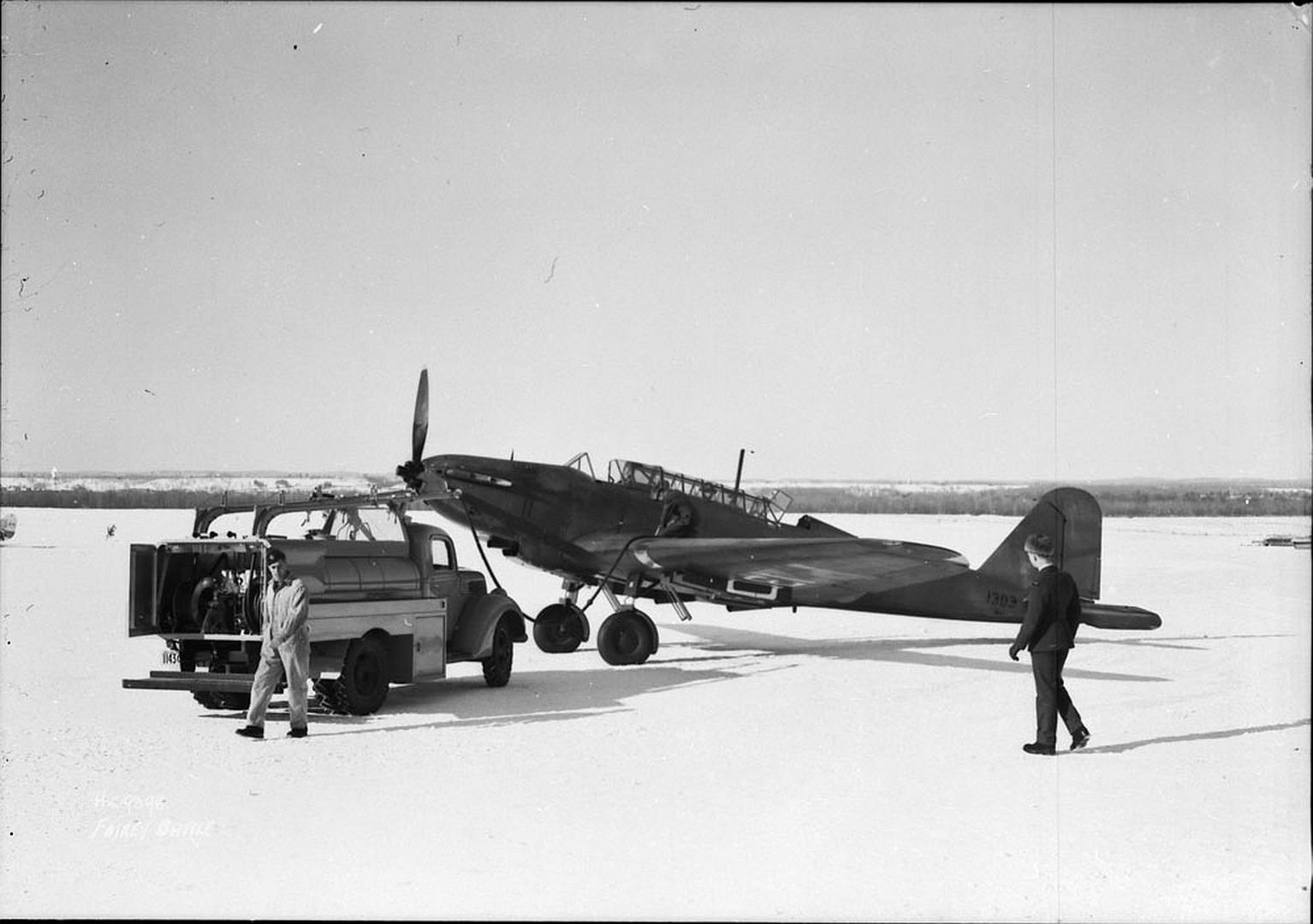
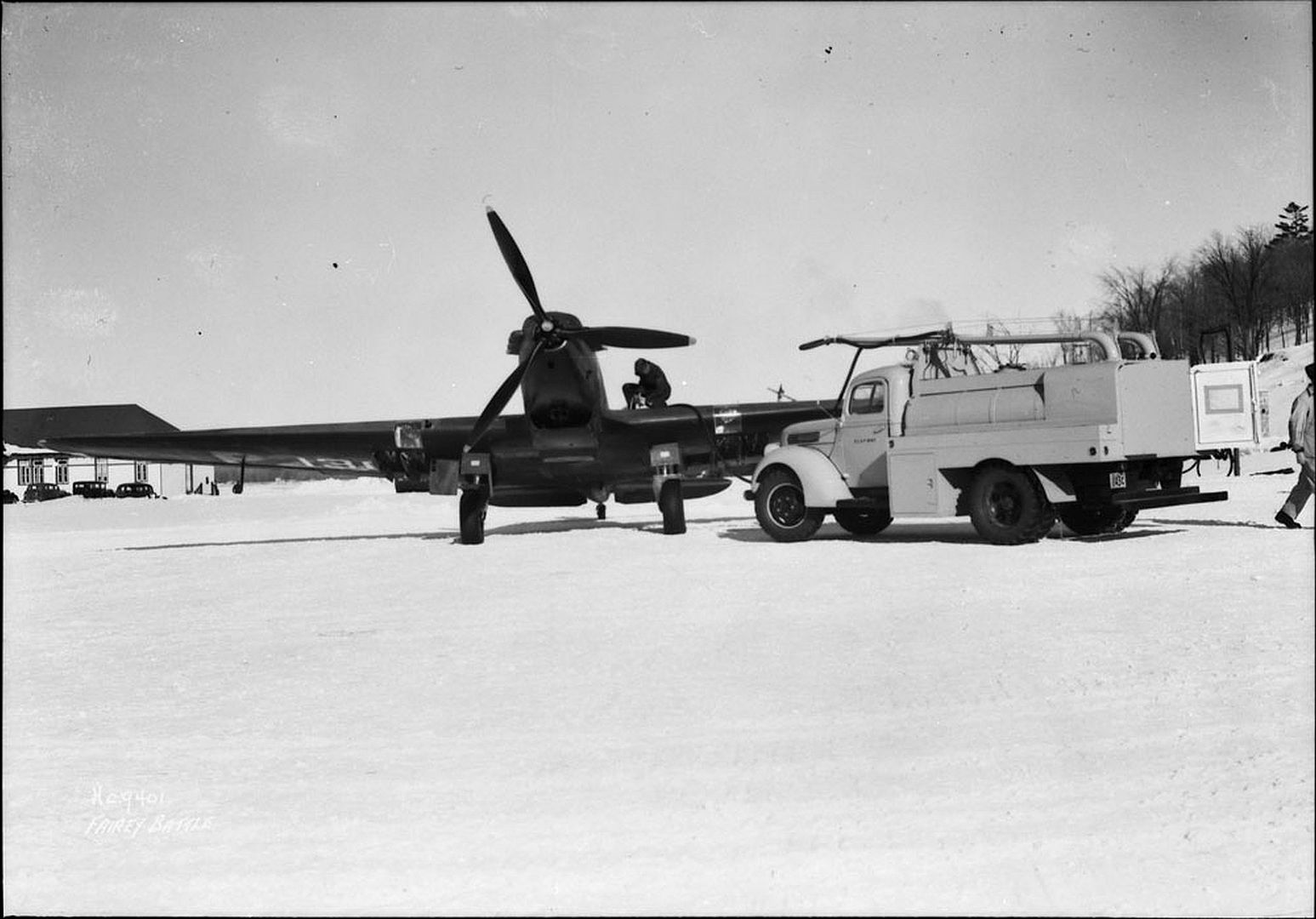
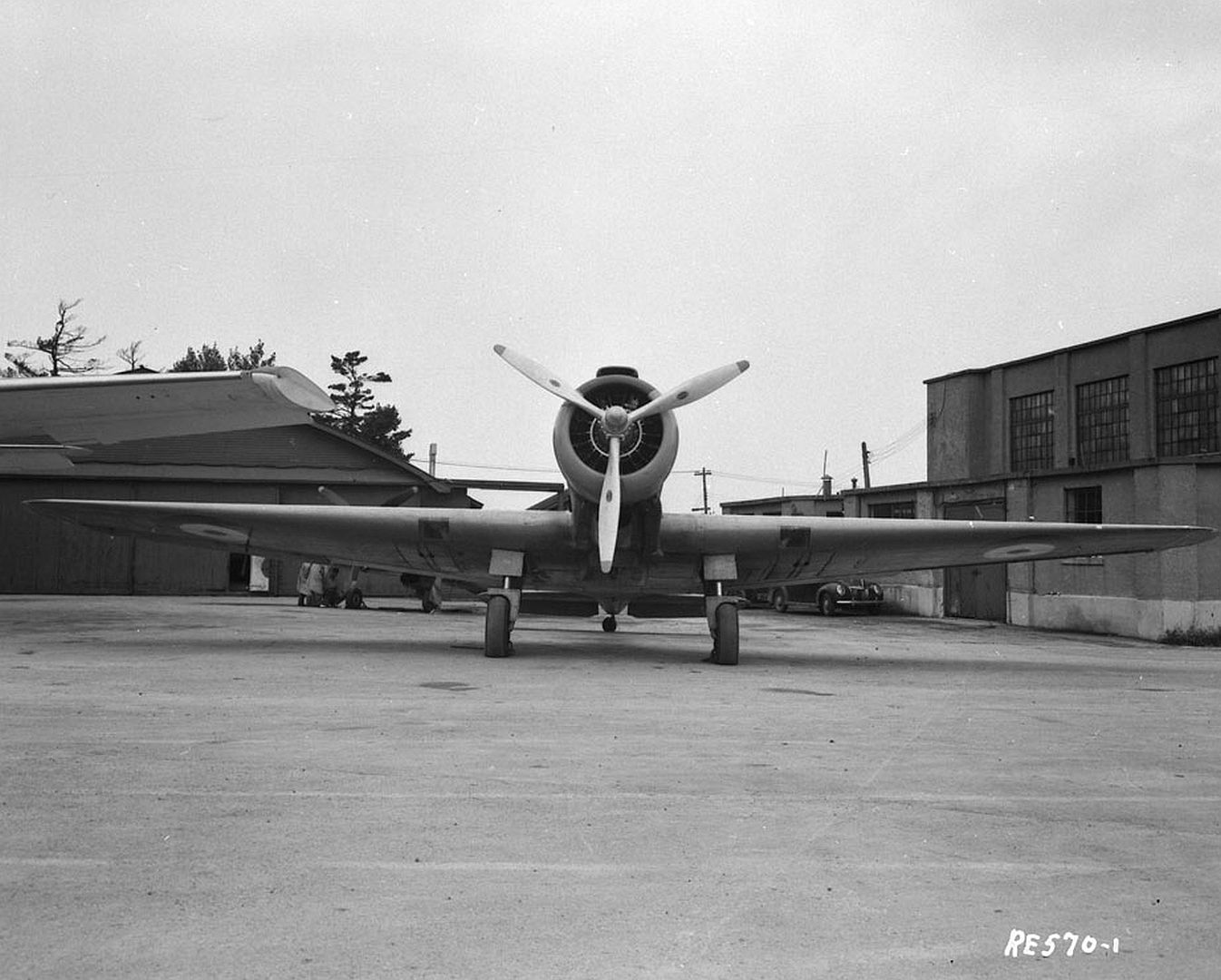
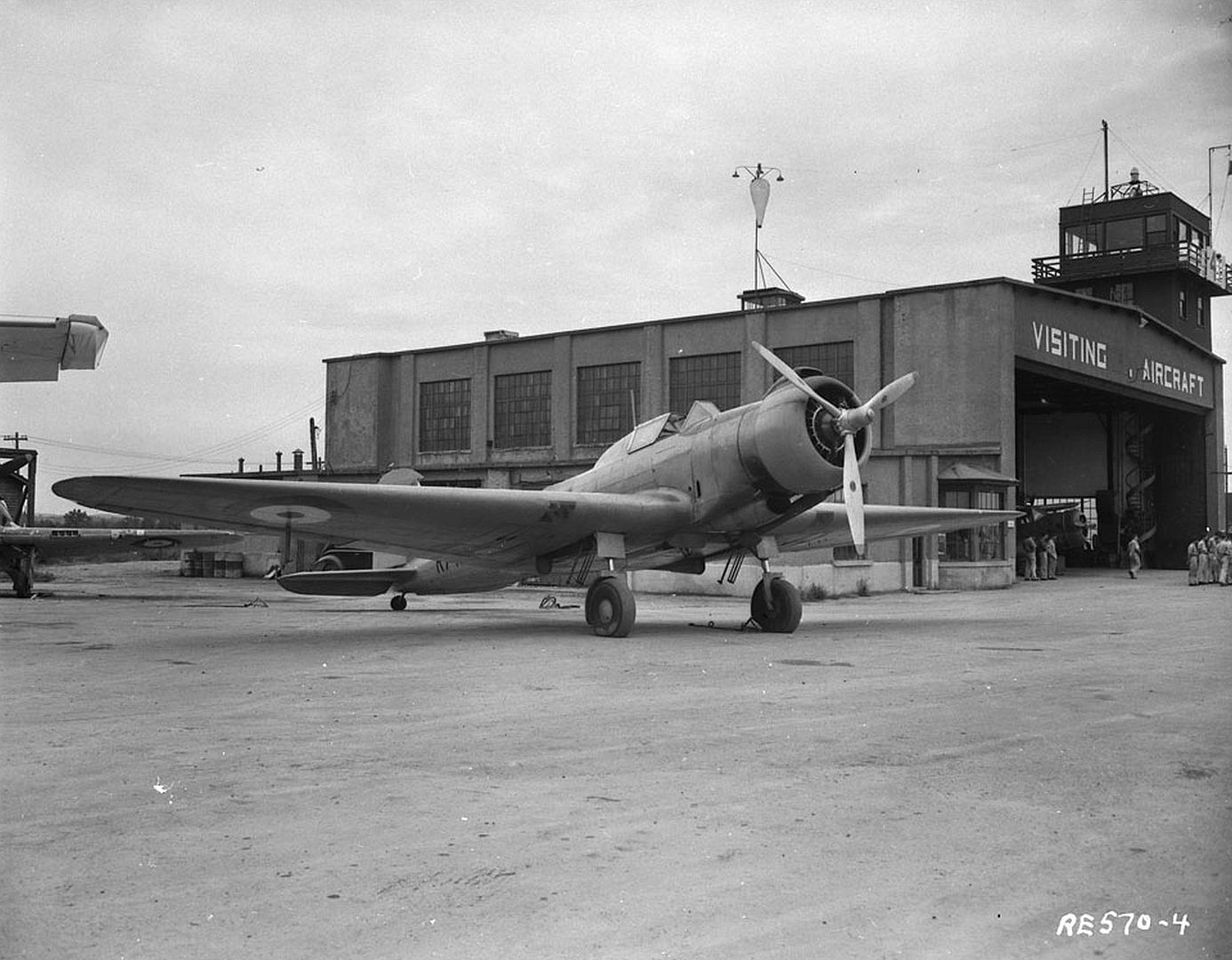


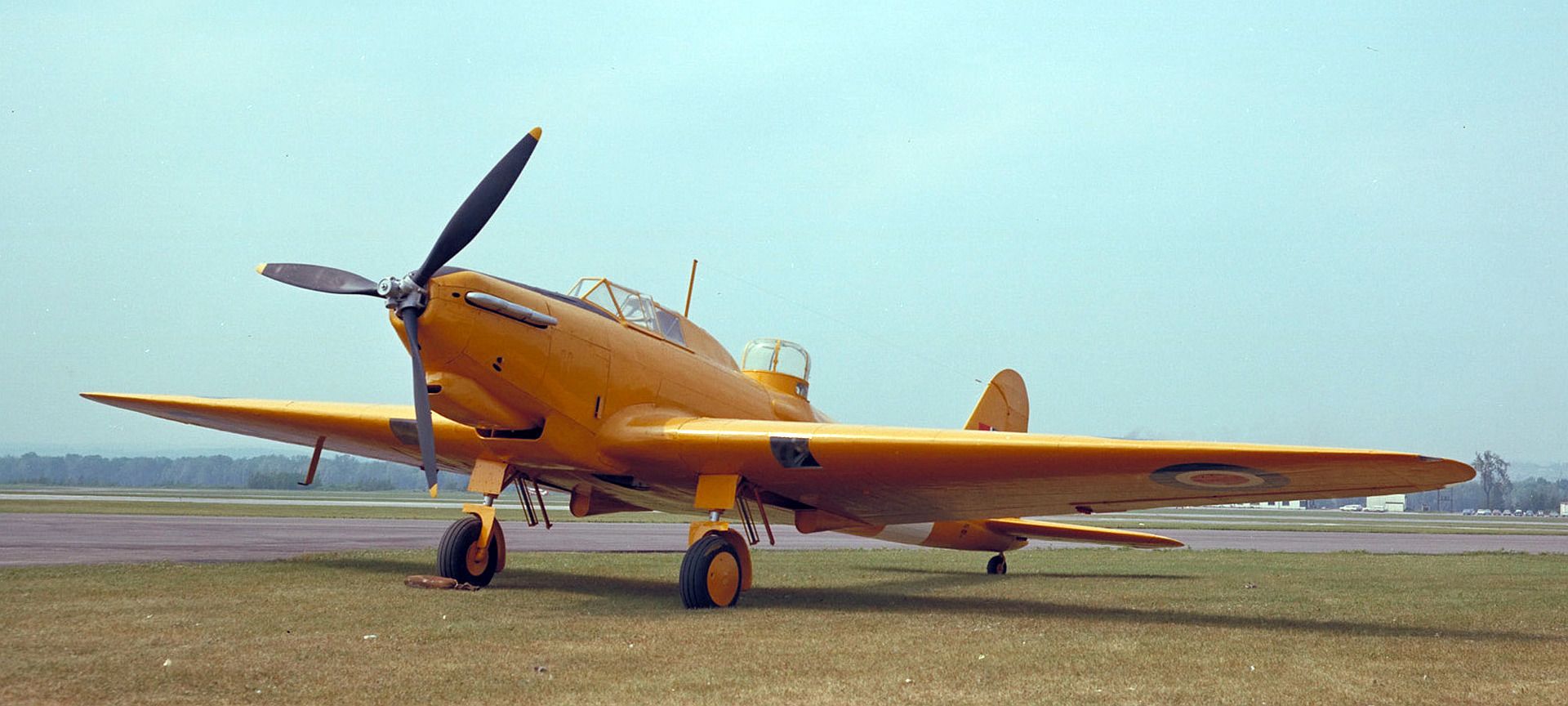
General characteristics (Mk.II)
Crew: 3
Length: 42 ft 4 in (12.91 m)
Wingspan: 54 ft 0 in (16.46 m)
Height: 15 ft 6 in (4.72 m)
Wing area: 422 ft? (39.2 m?)
Empty weight: 6,647 lb (3,015 kg)
Loaded weight: 10,792 lb (4,895 kg)
Powerplant: 1 ? Rolls-Royce Merlin II liquid-cooled V12 engine, 1,030 hp (768 kW)
Performance
Maximum speed: 257 mph (223 kn, 413 km/h) at 15,000 ft (4,600 m)
Range: 1,000 mi (870 nmi, 1610 km)
Service ceiling: 25,000 ft (7,620 m)
Climb to 5,000 ft (1,520 m): 4 min 6 sec
Armament
Guns:
1? .303 in (7.7 mm) Browning machine gun in starboard wing
1? .303 in (7.7 mm) Vickers K machine gun in rear cabin
Bombs:
1,000 lb (450 kg) bombs internally (4? 250 lb (110 kg) bombs), or:
1,500 lb (680 kg) bombs externally
Post a reply
- Go to Previous topic
- Go to Next topic
- Go to Welcome
- Go to Introduce Yourself
- Go to General Discussion
- Go to Screenshots, Images and Videos
- Go to Off topic
- Go to Works in Progress
- Go to Skinning Tips / Tutorials
- Go to Skin Requests
- Go to IJAAF Library
- Go to Luftwaffe Library
- Go to RAF Library
- Go to USAAF / USN Library
- Go to Misc Library
- Go to The Ops Room
- Go to Made in Germany
- Go to Campaigns and Missions
- Go to Works in Progress
- Go to Juri's Air-Raid Shelter
- Go to Campaigns and Missions
- Go to Works in Progress
- Go to Skinpacks
- Go to External Projects Discussion
- Go to Books & Resources
